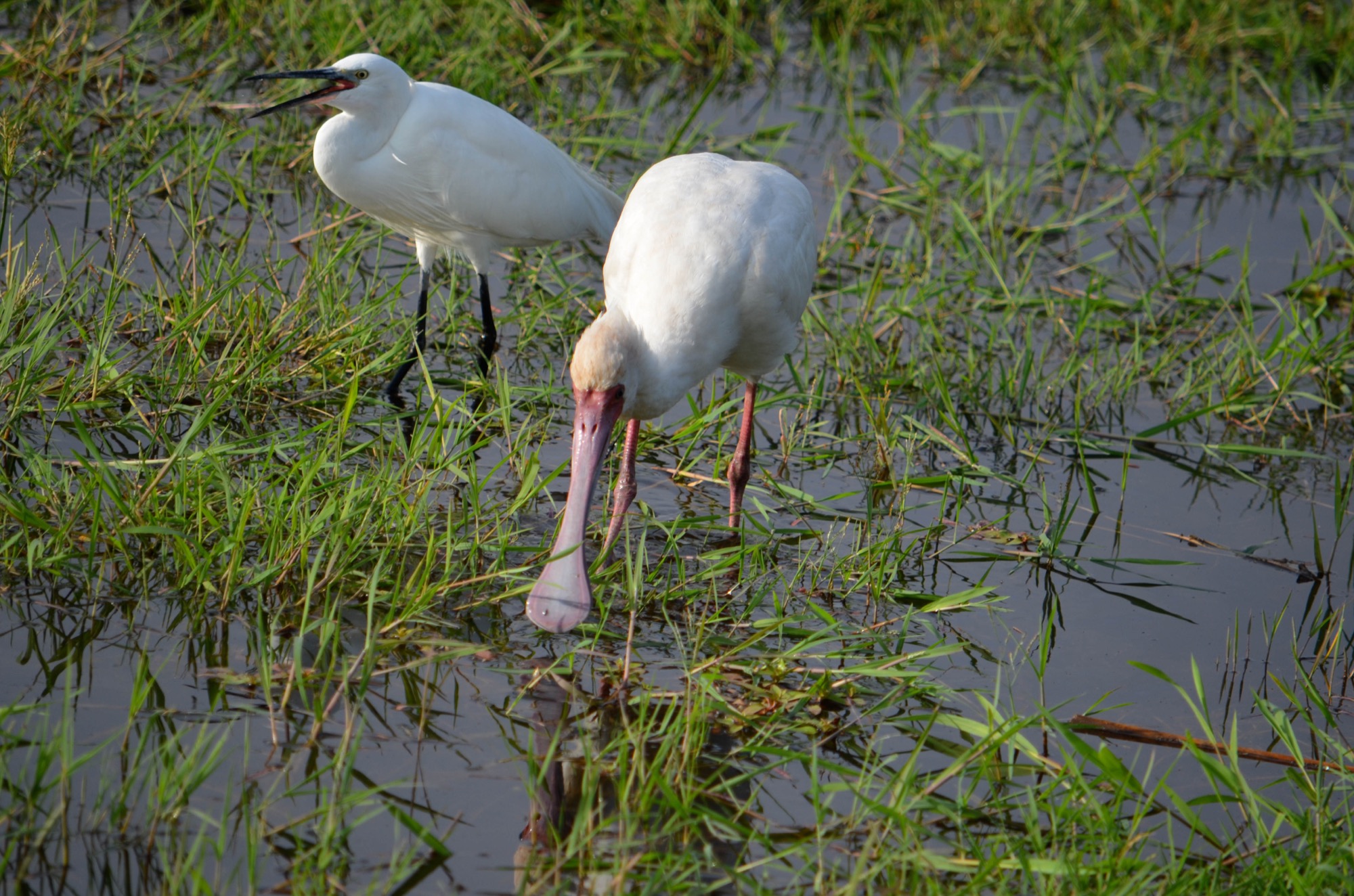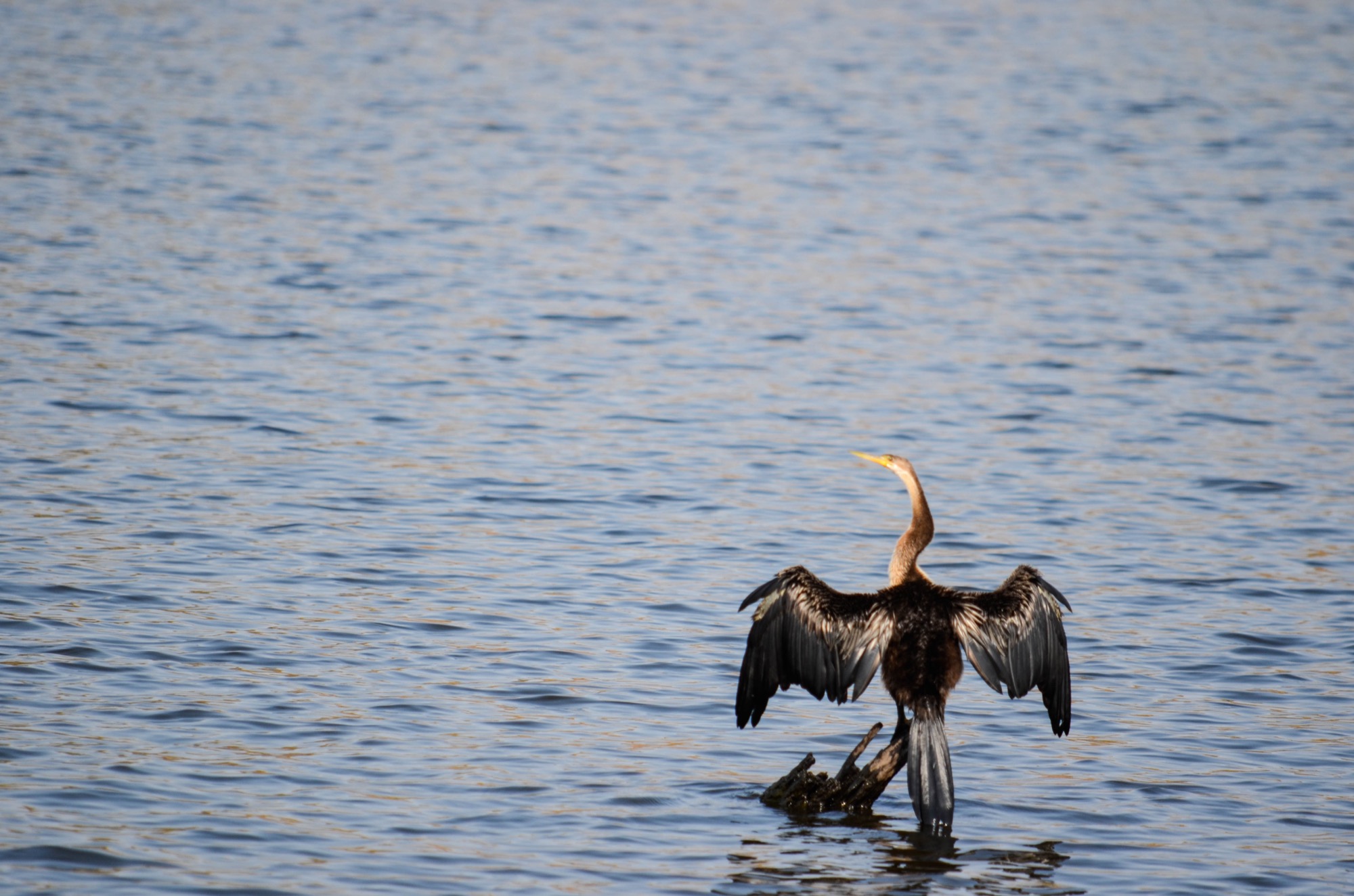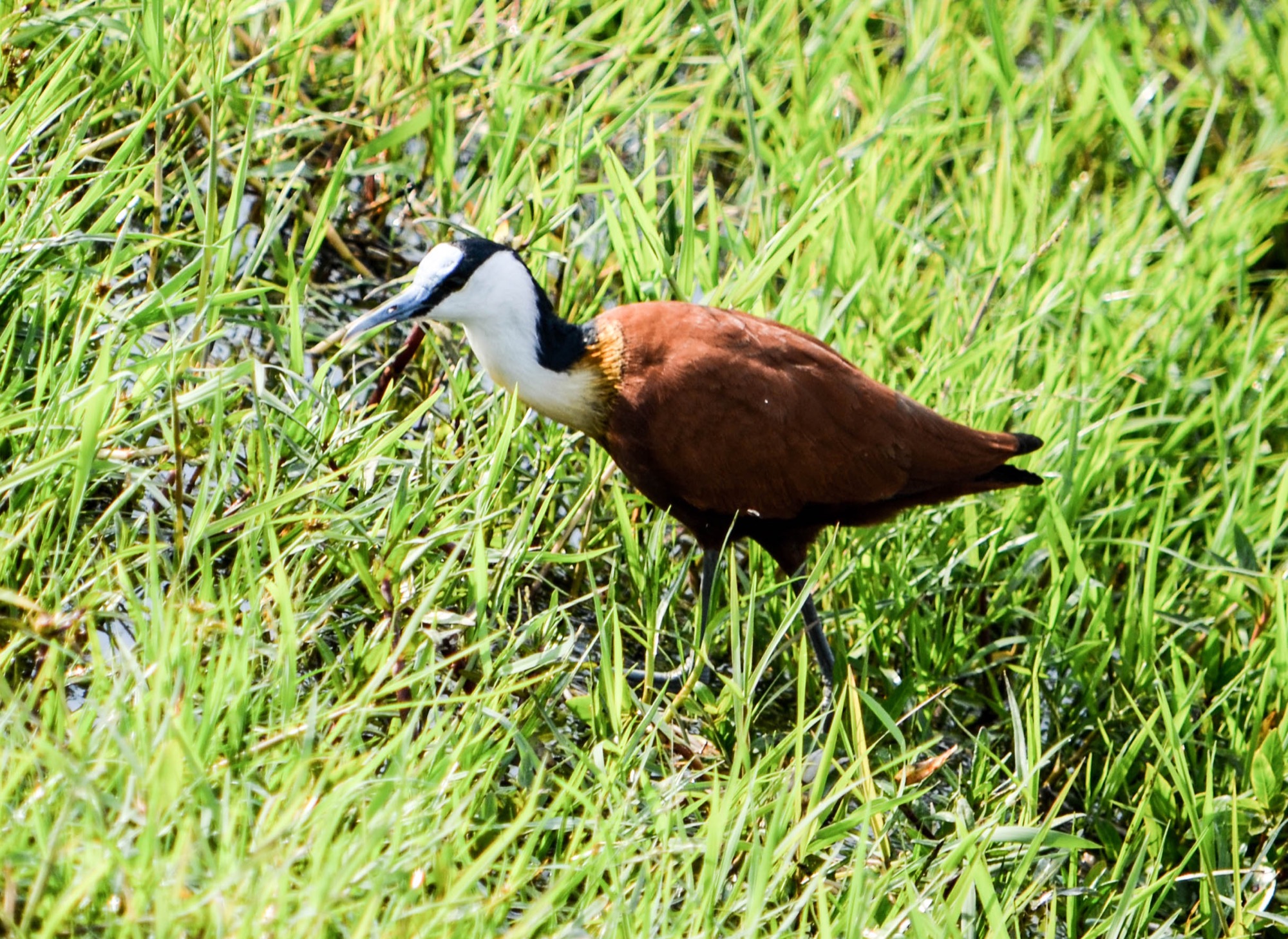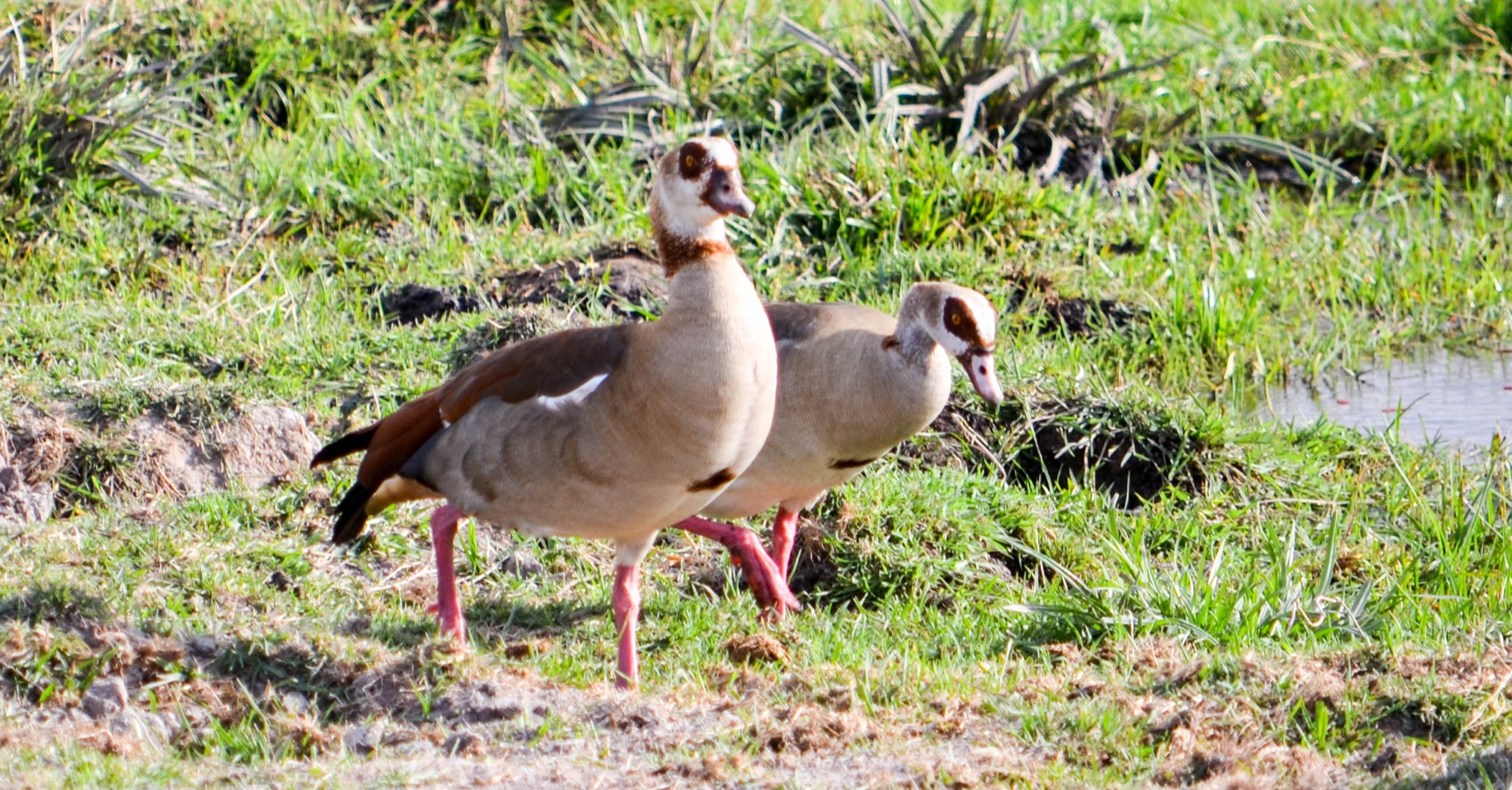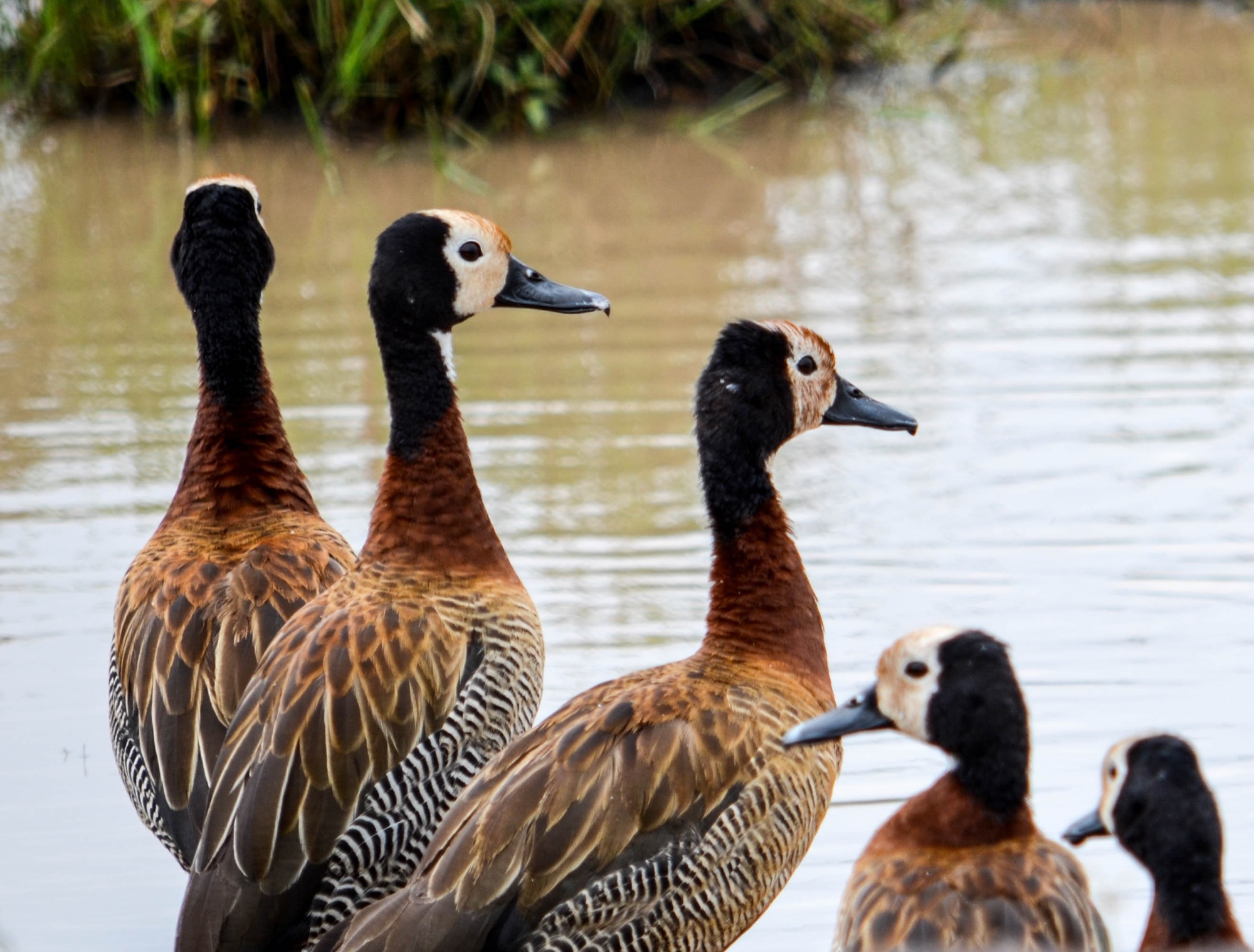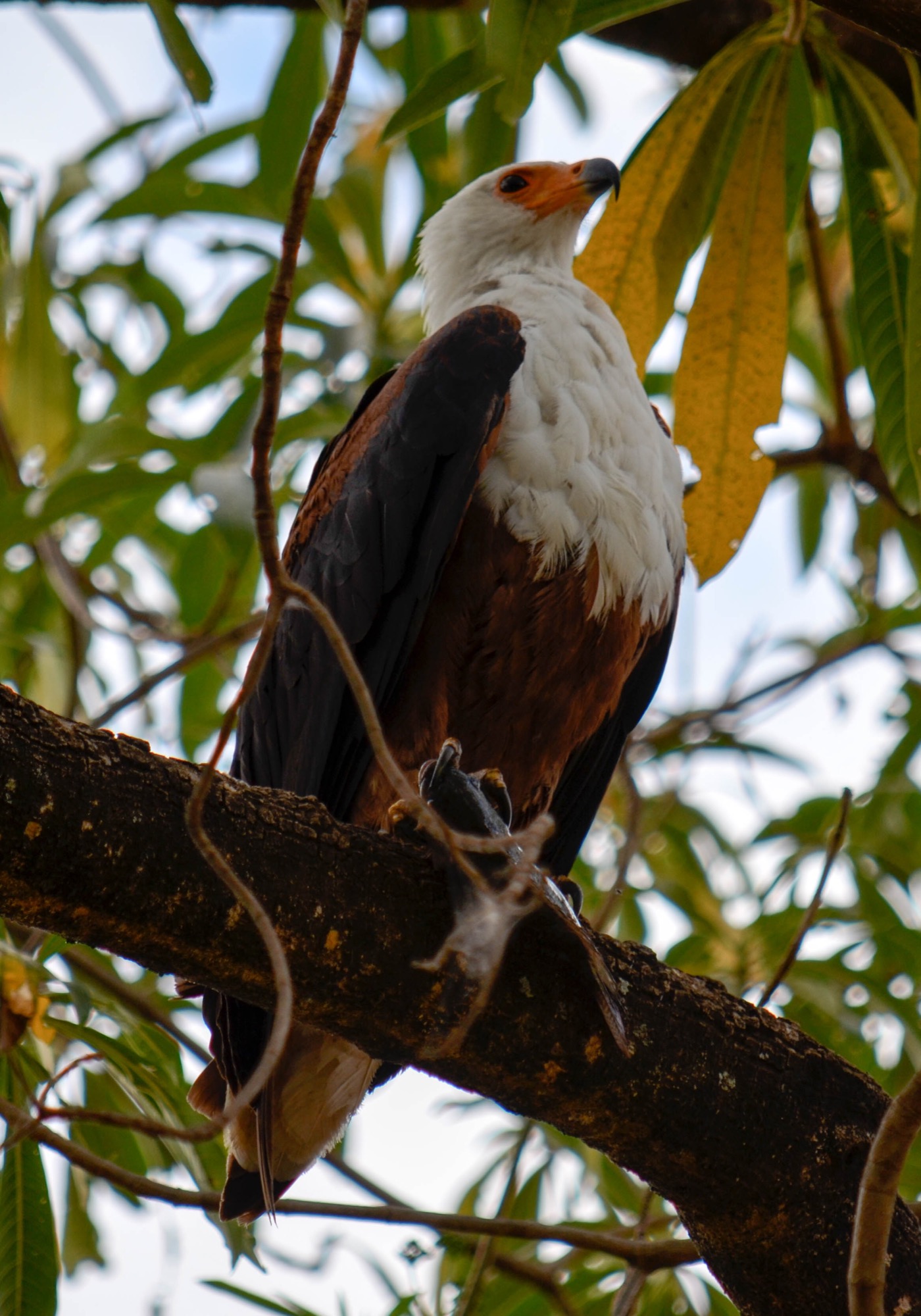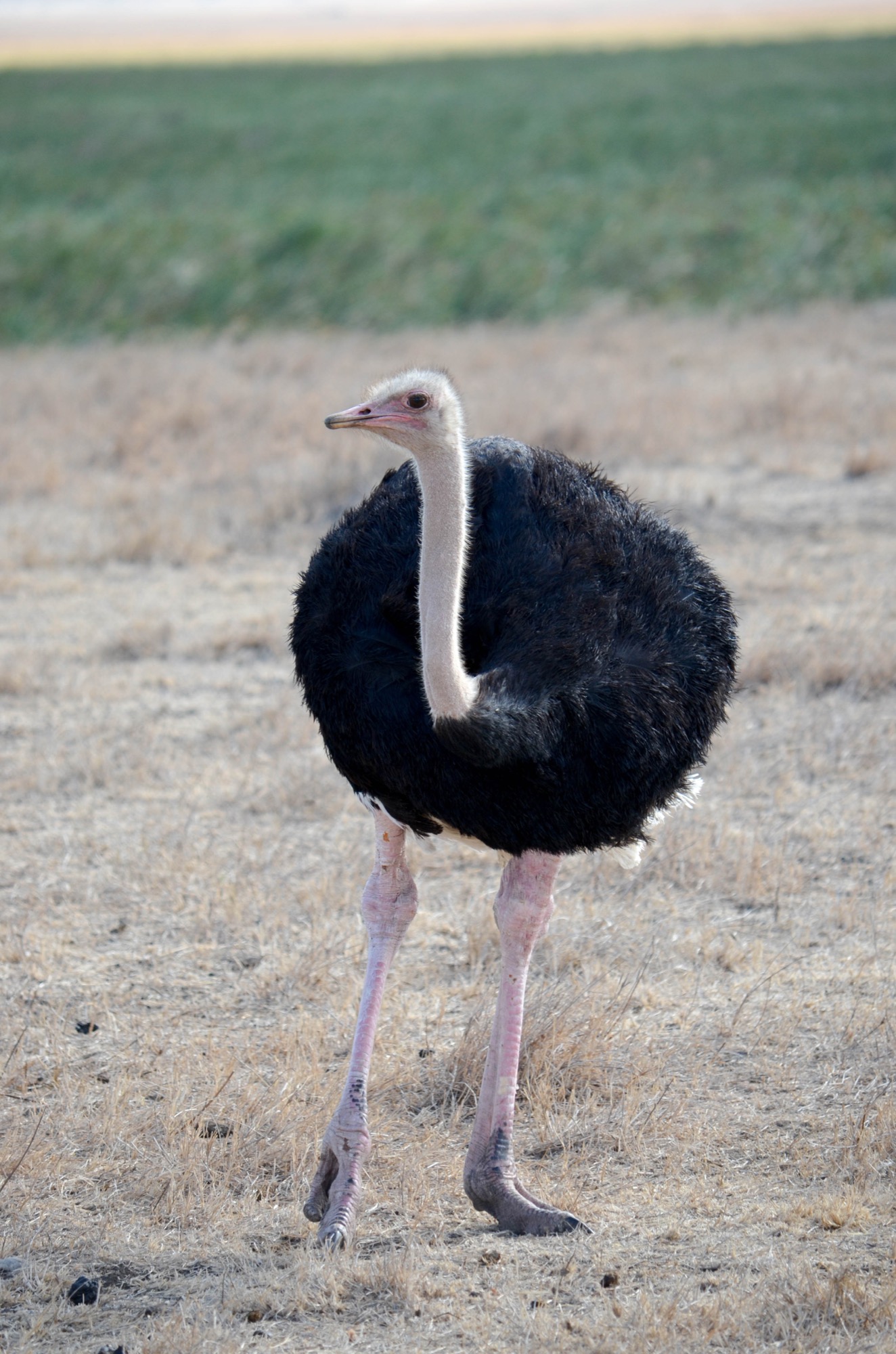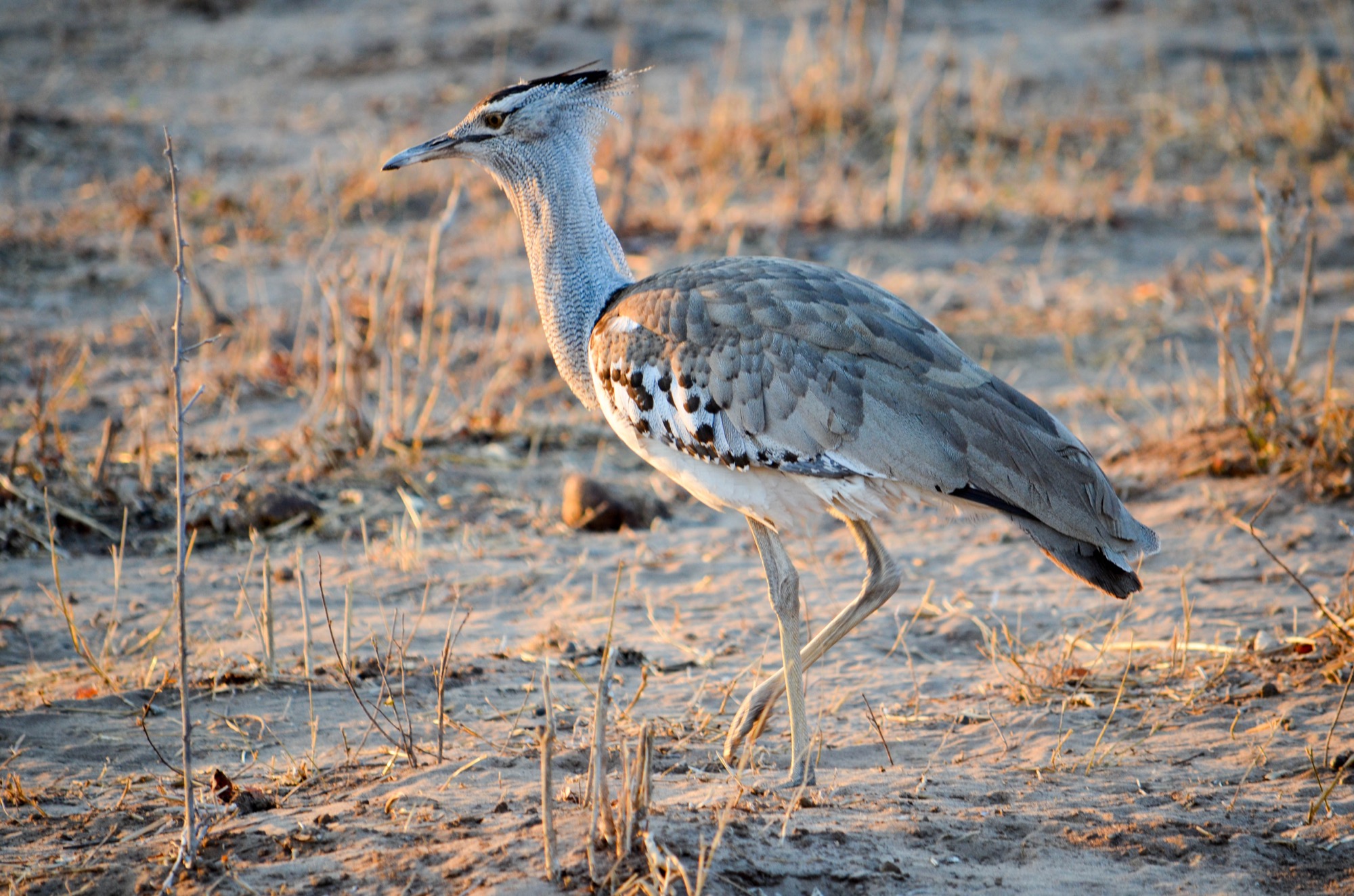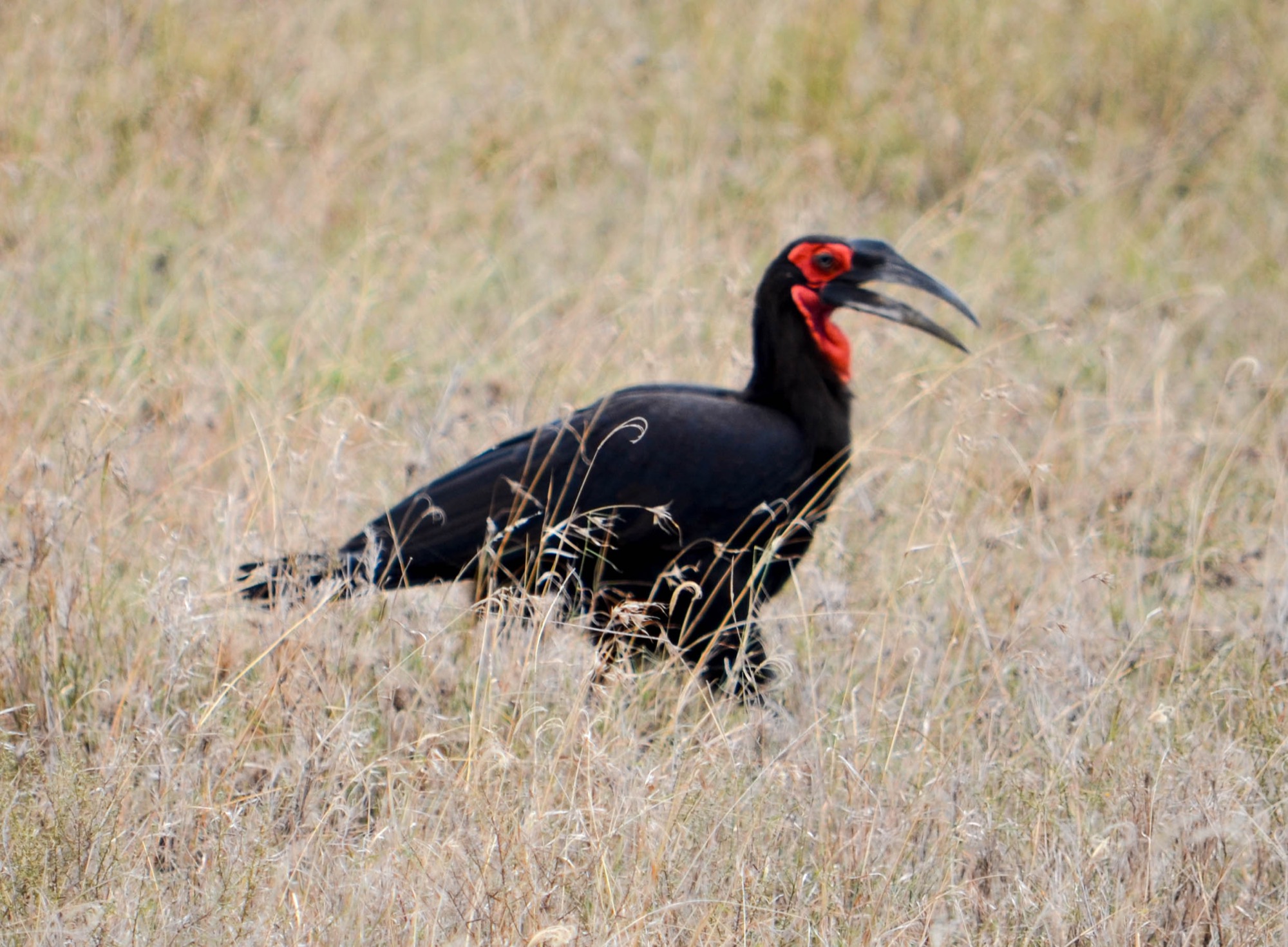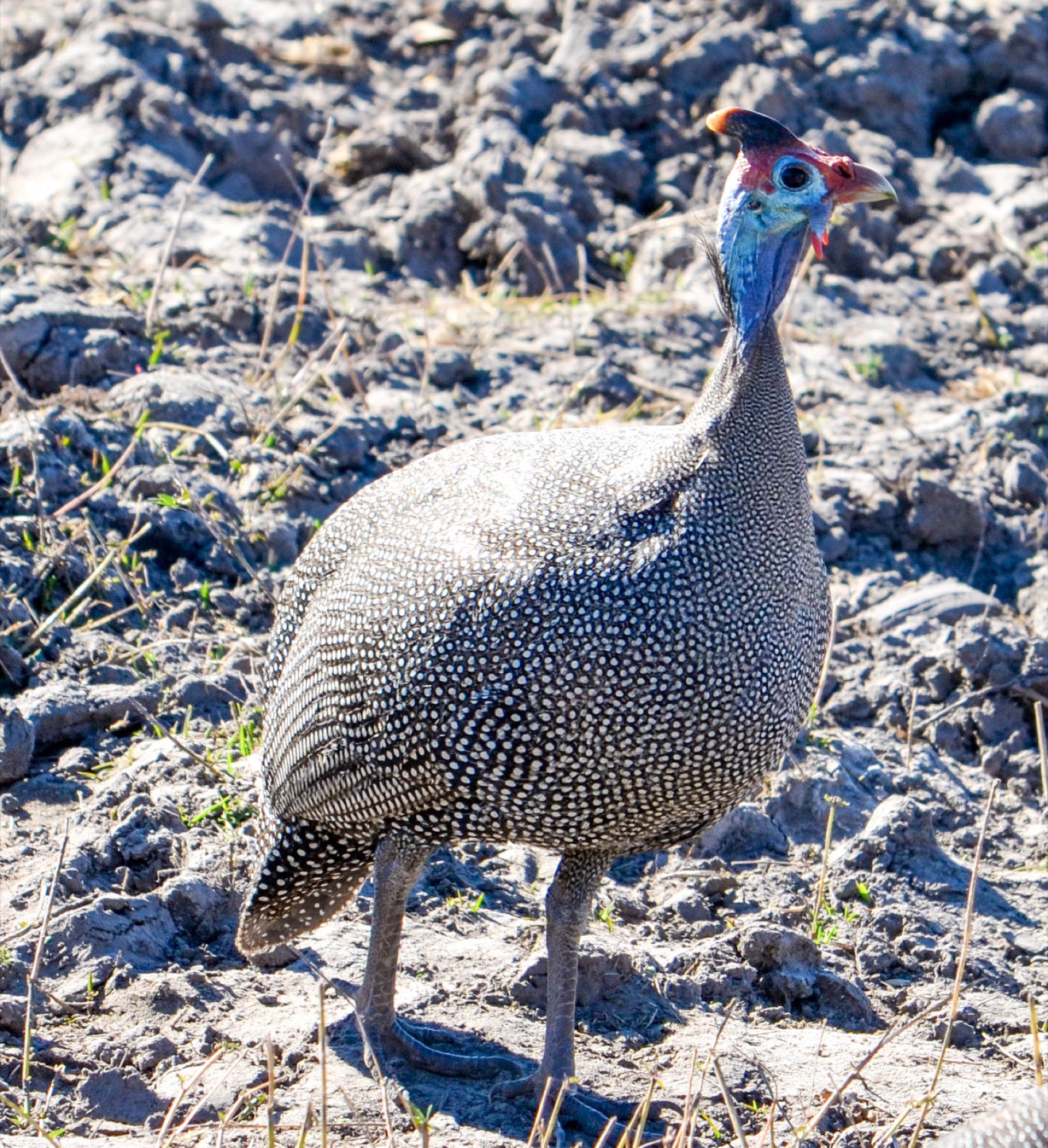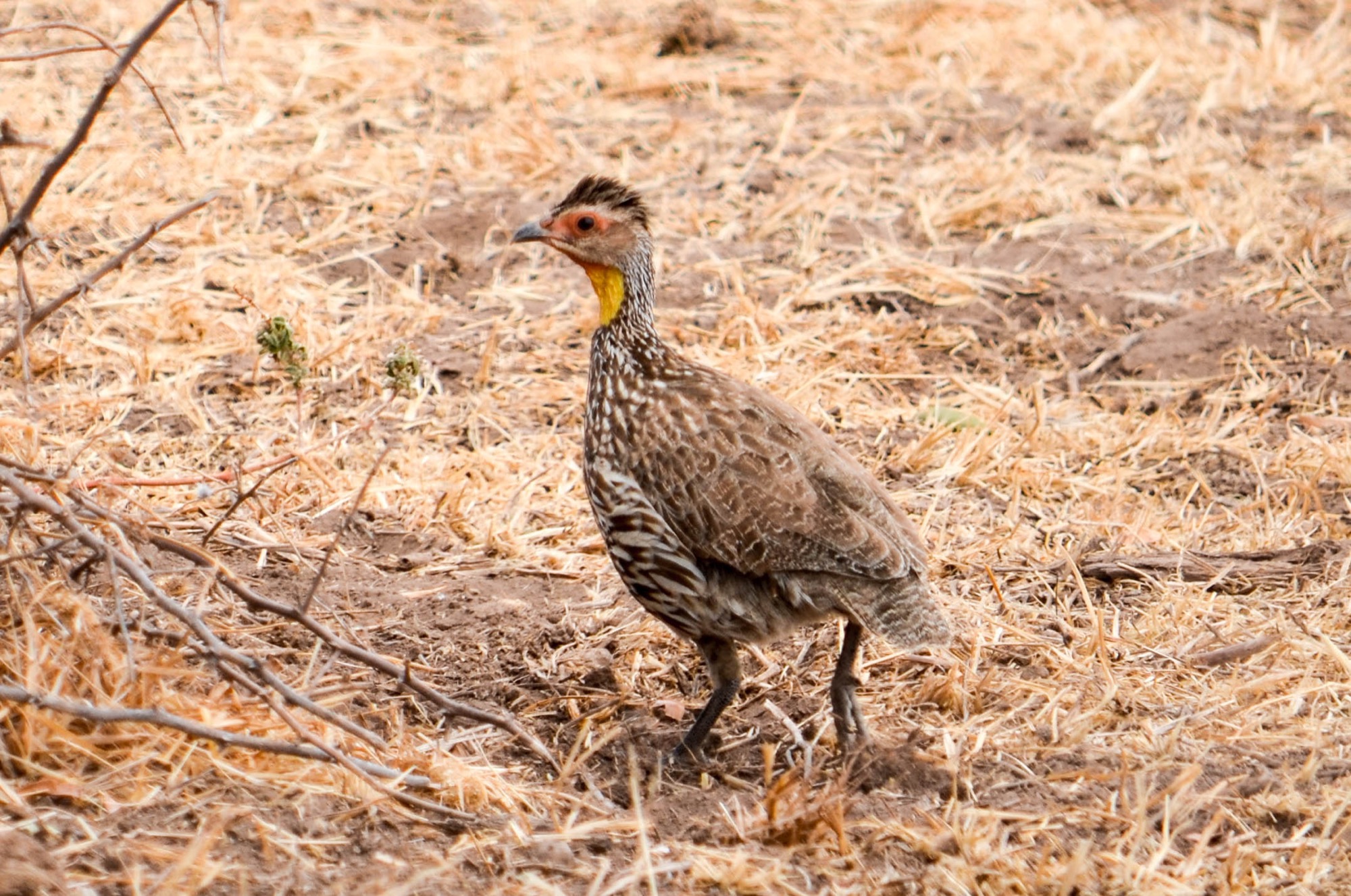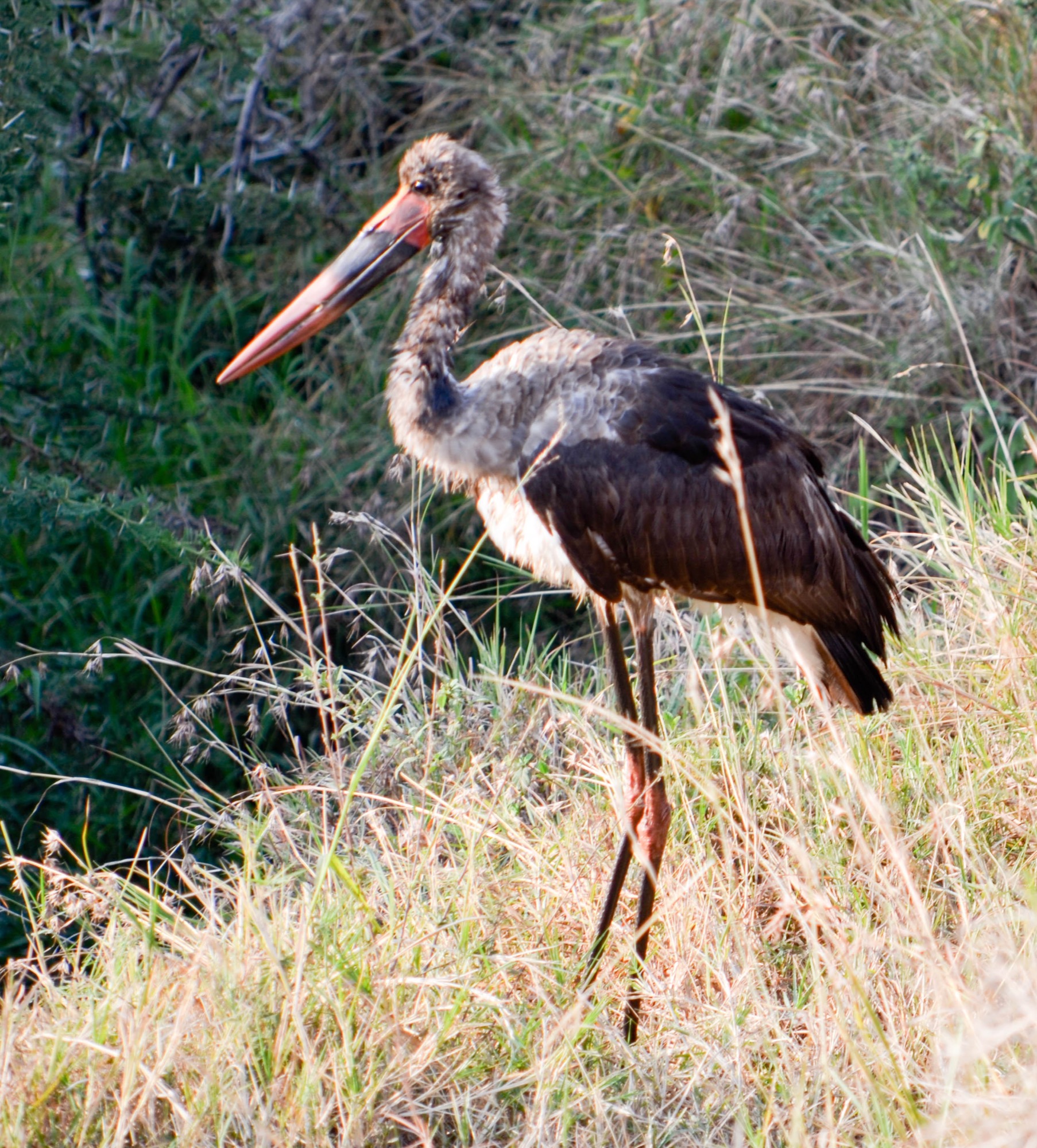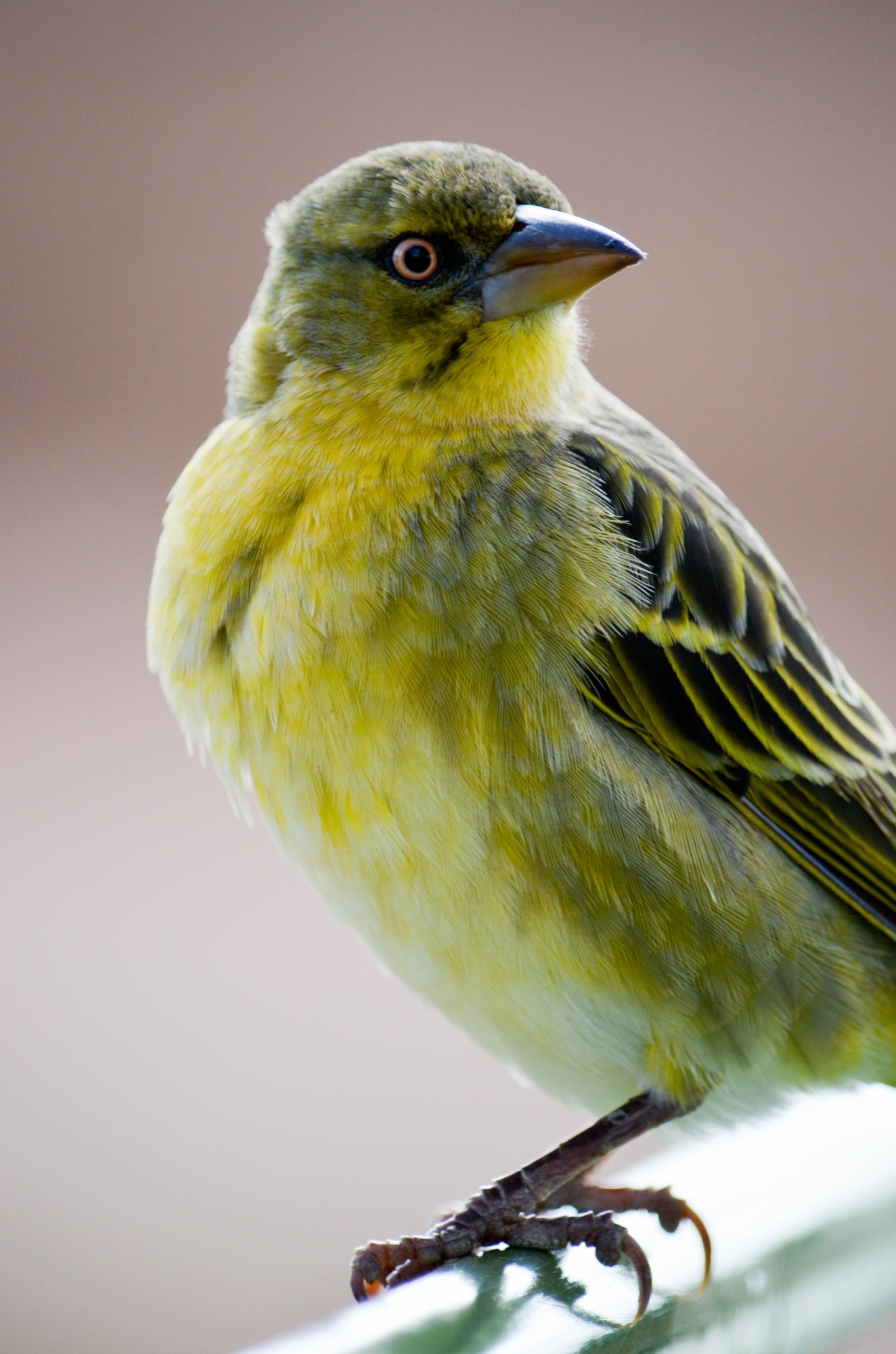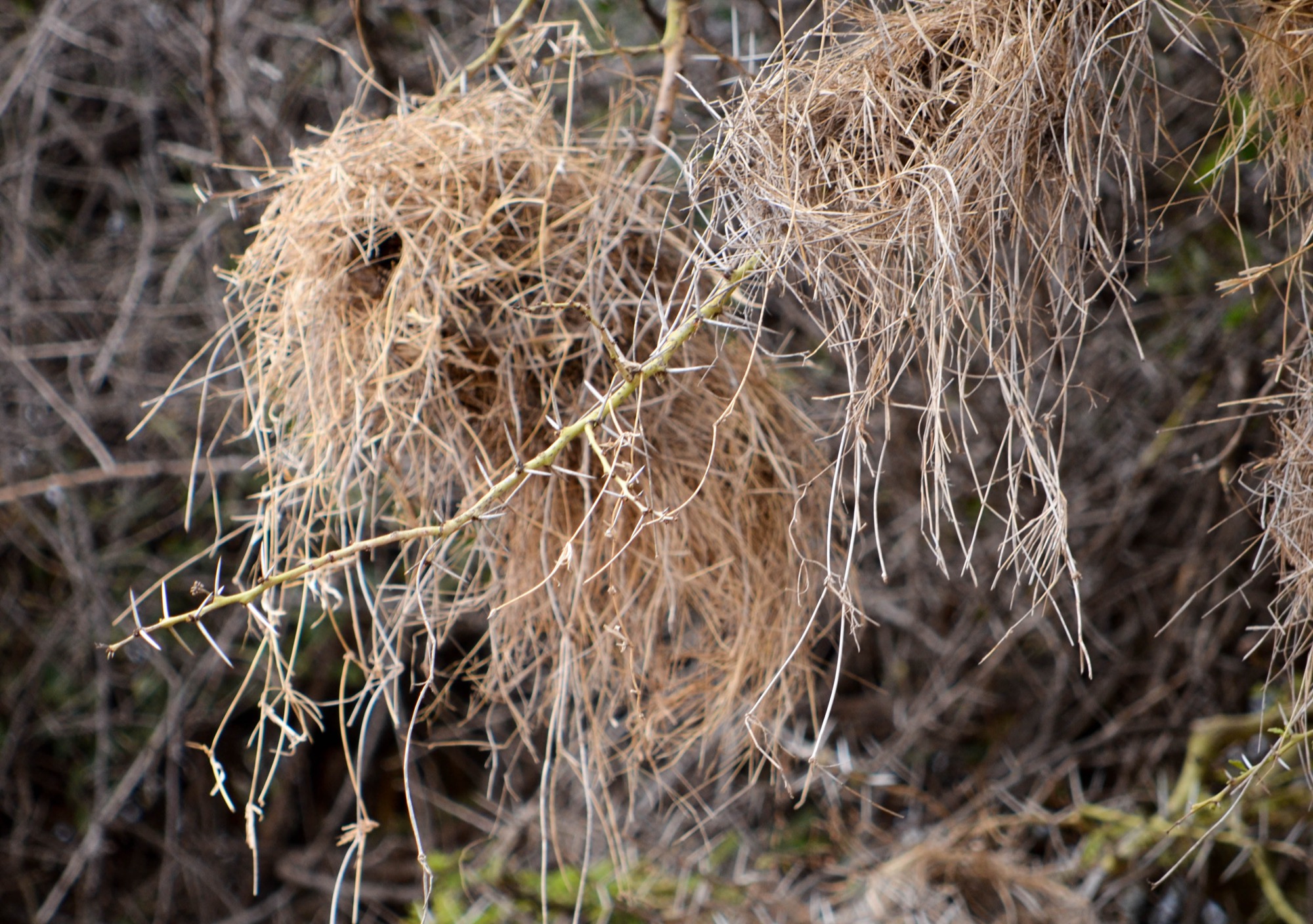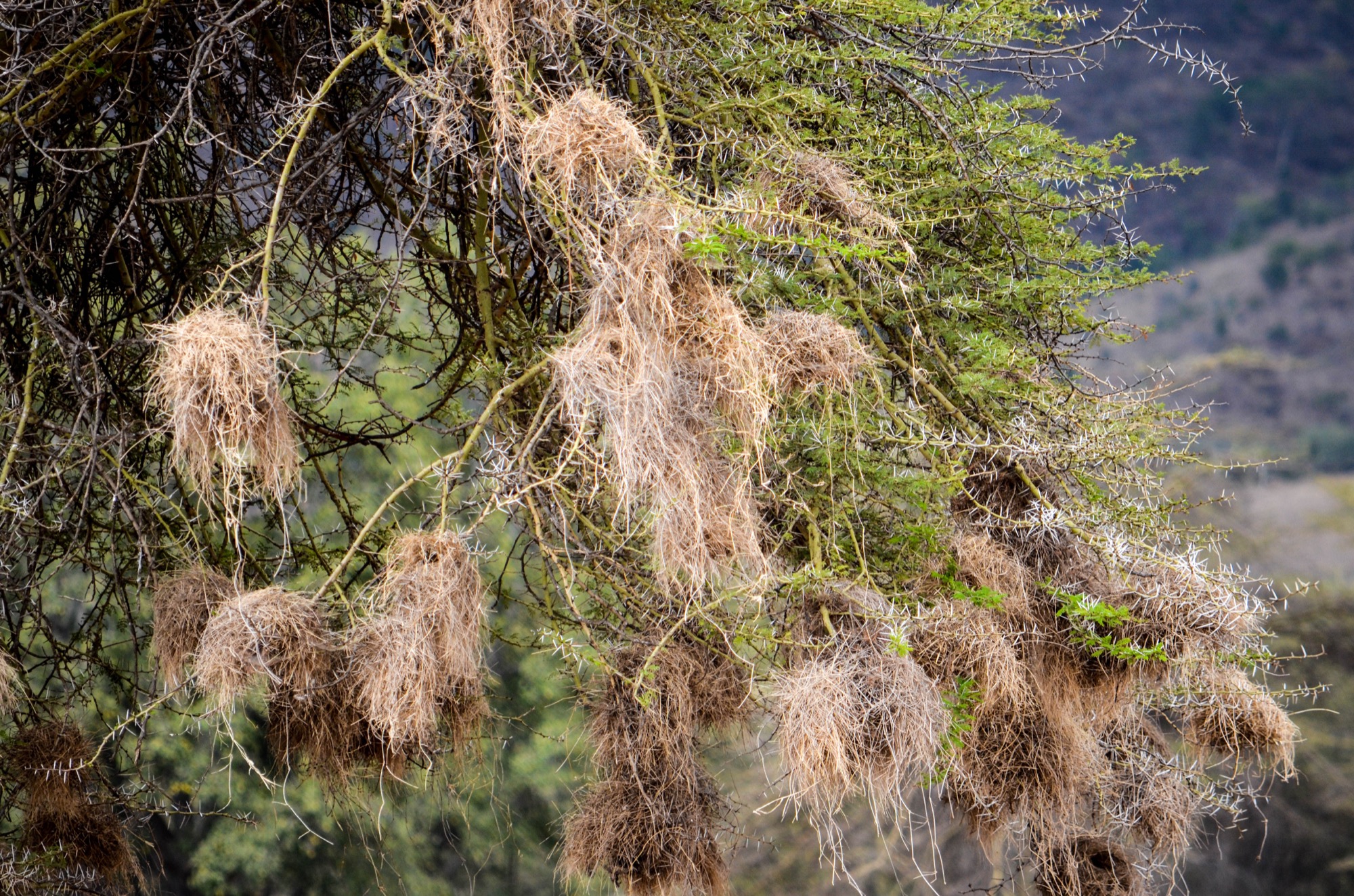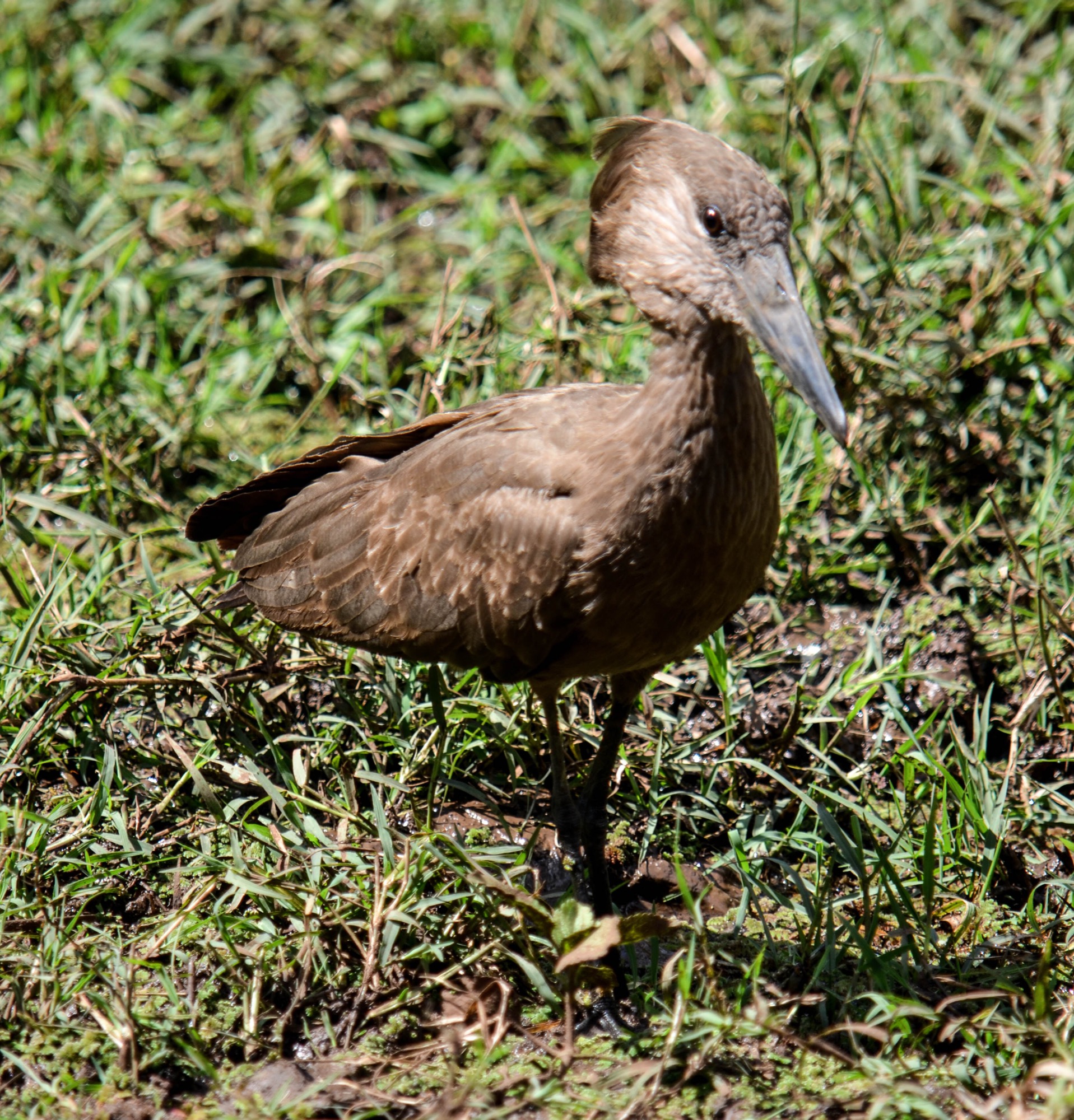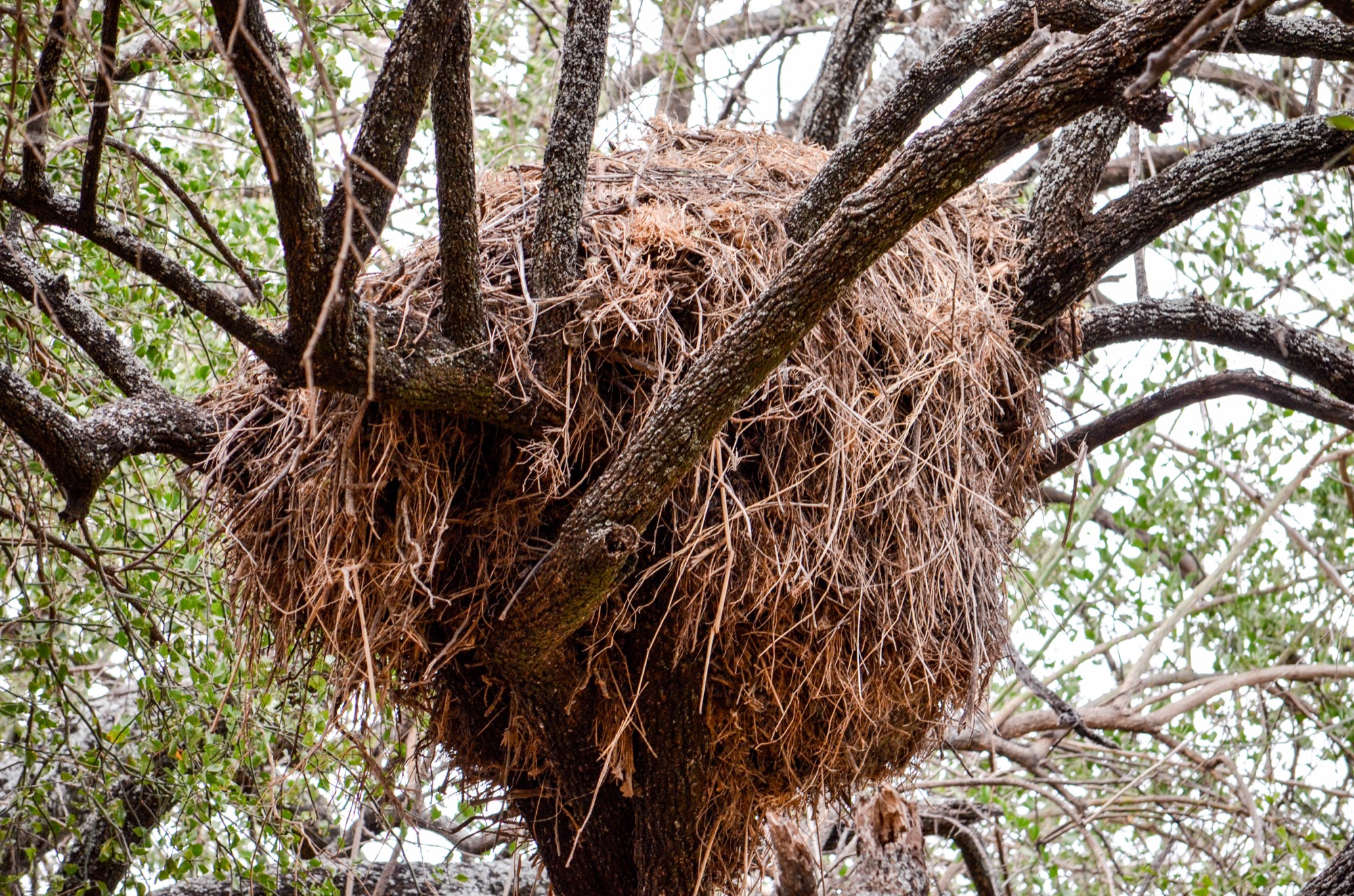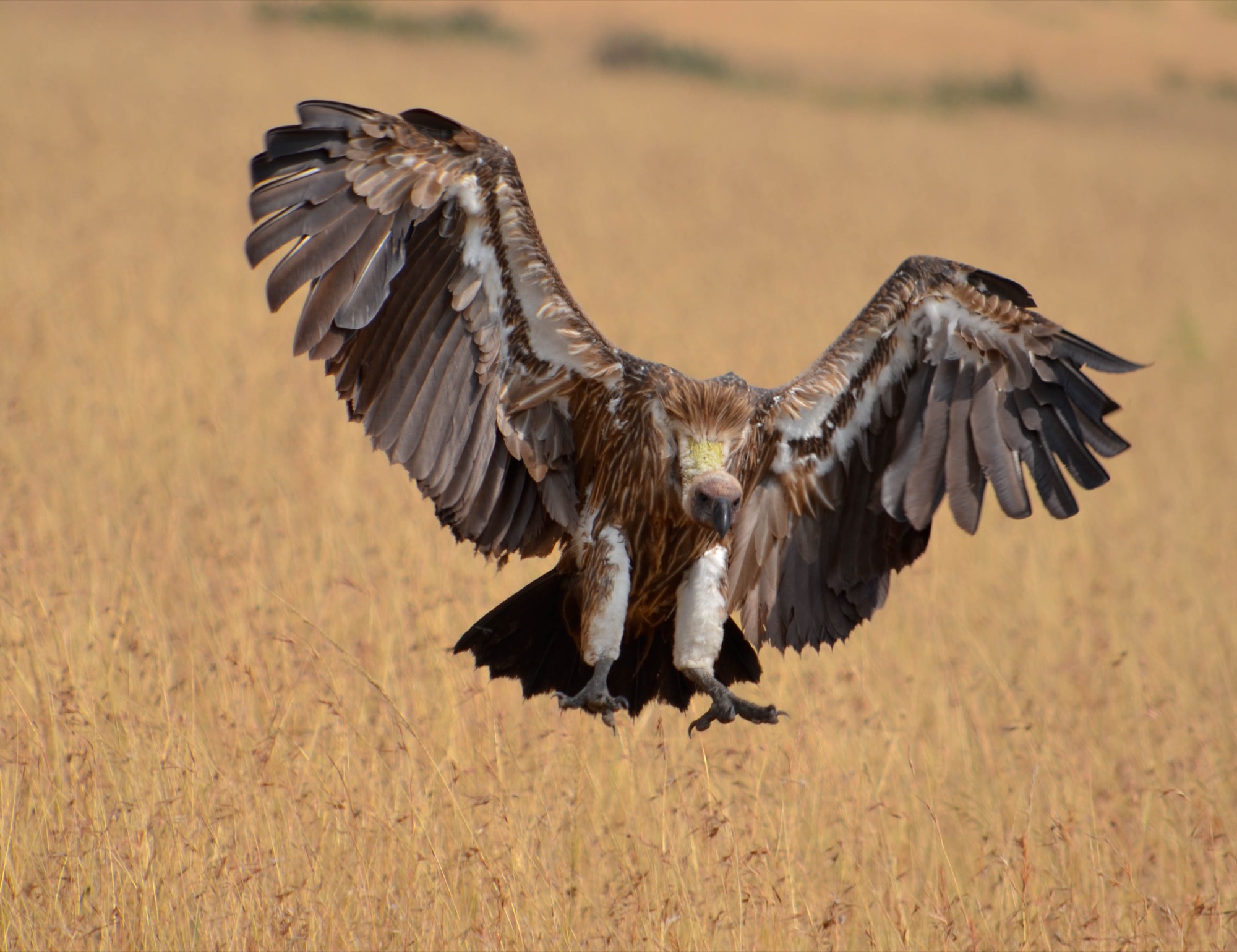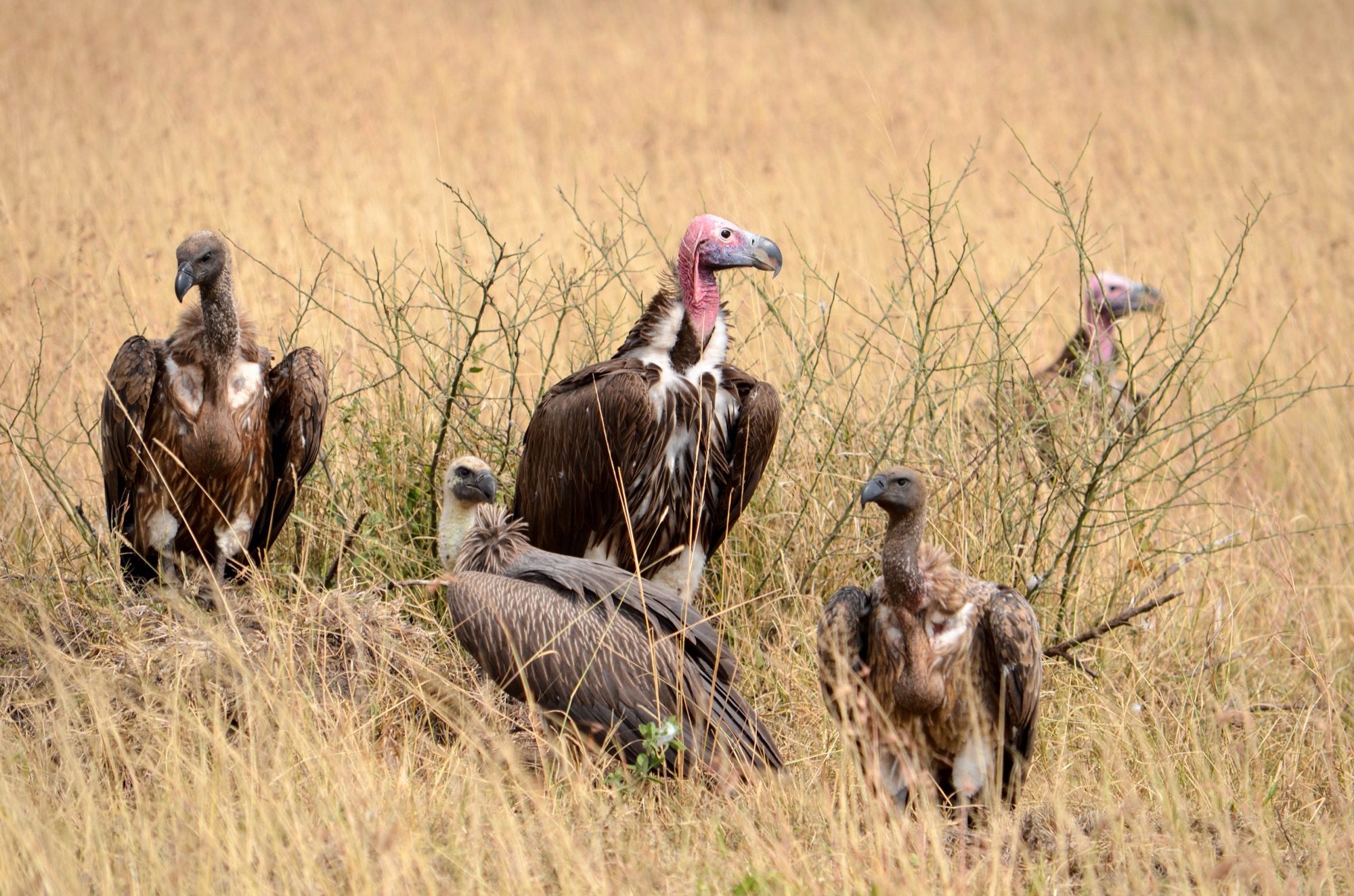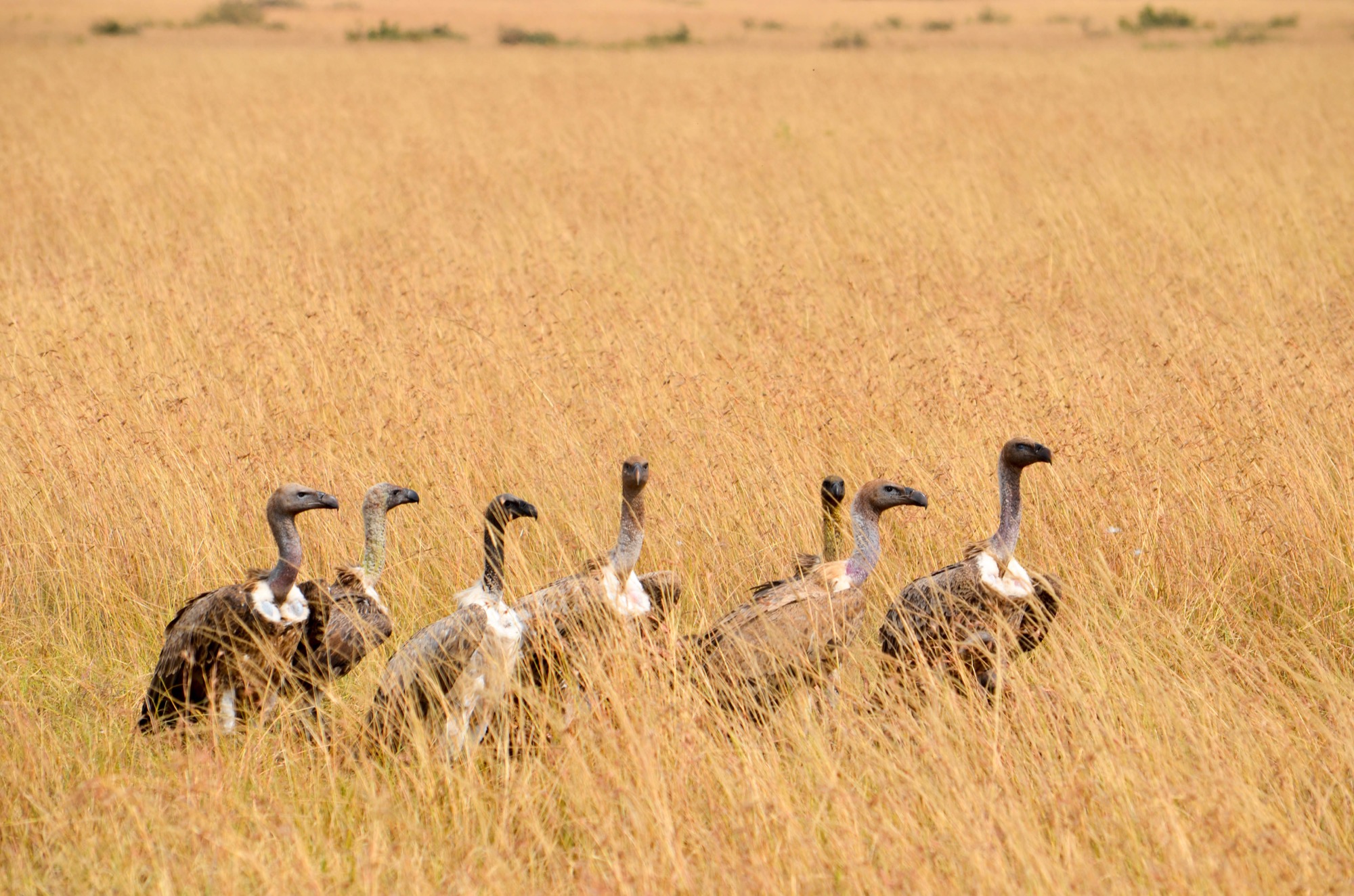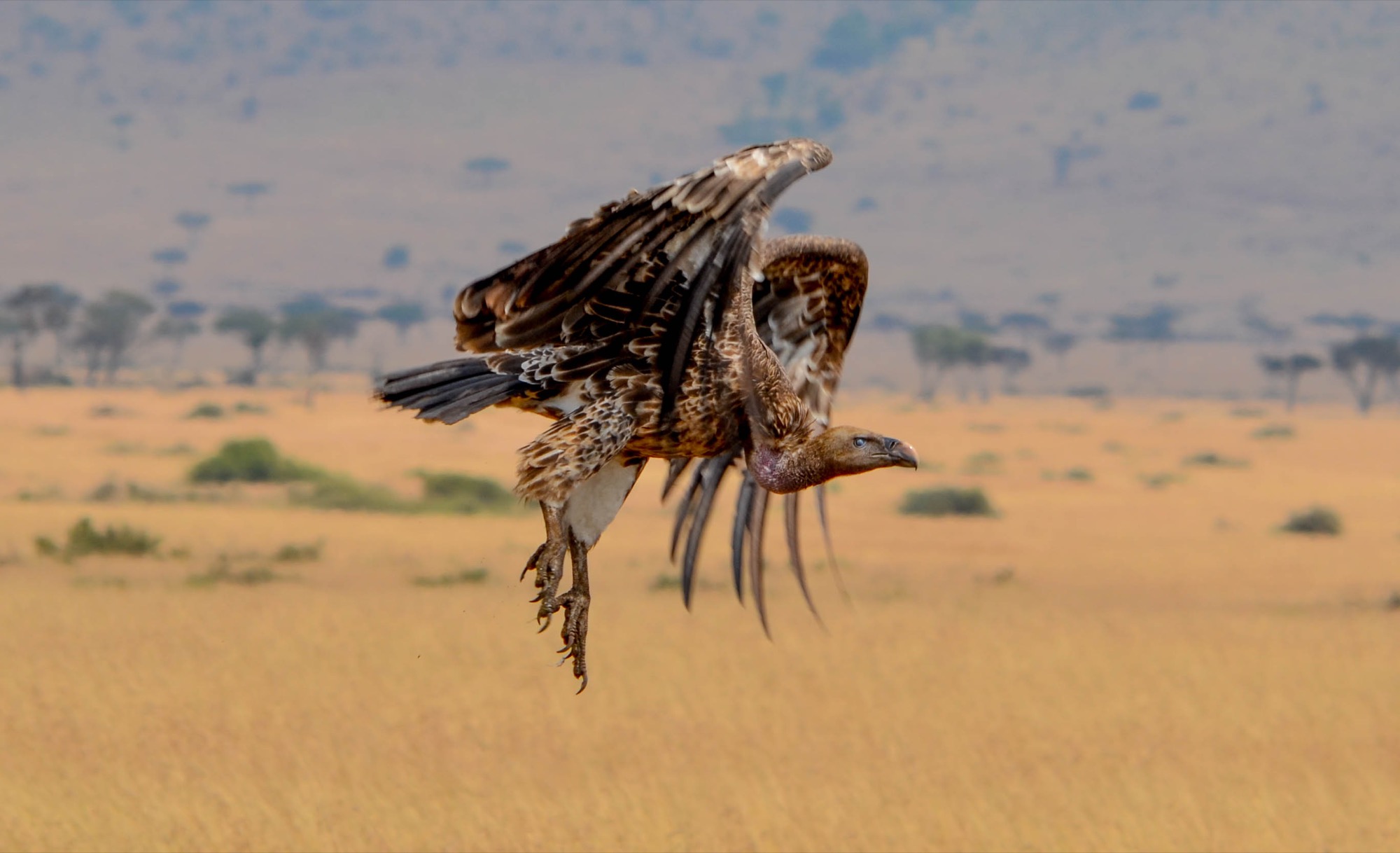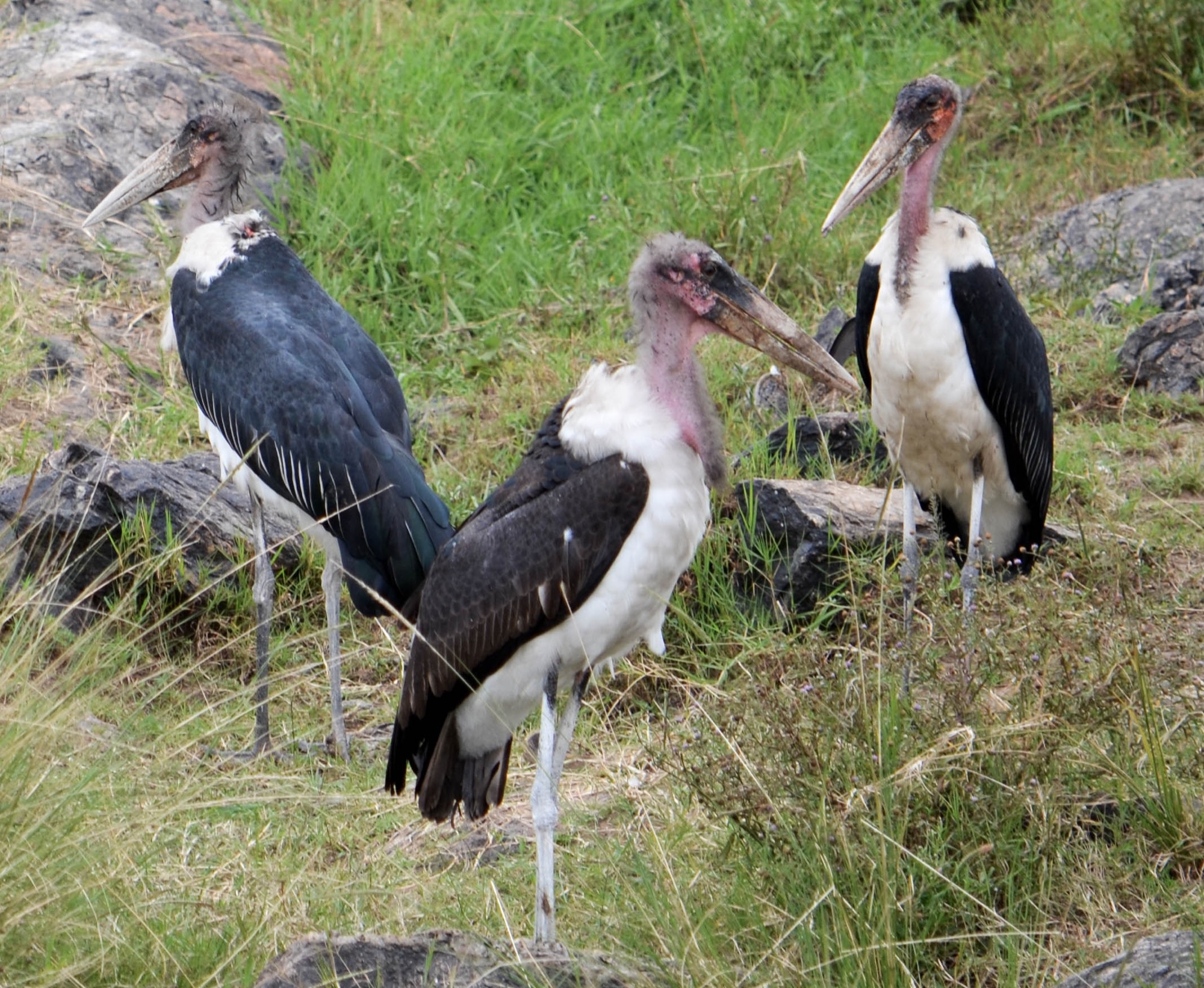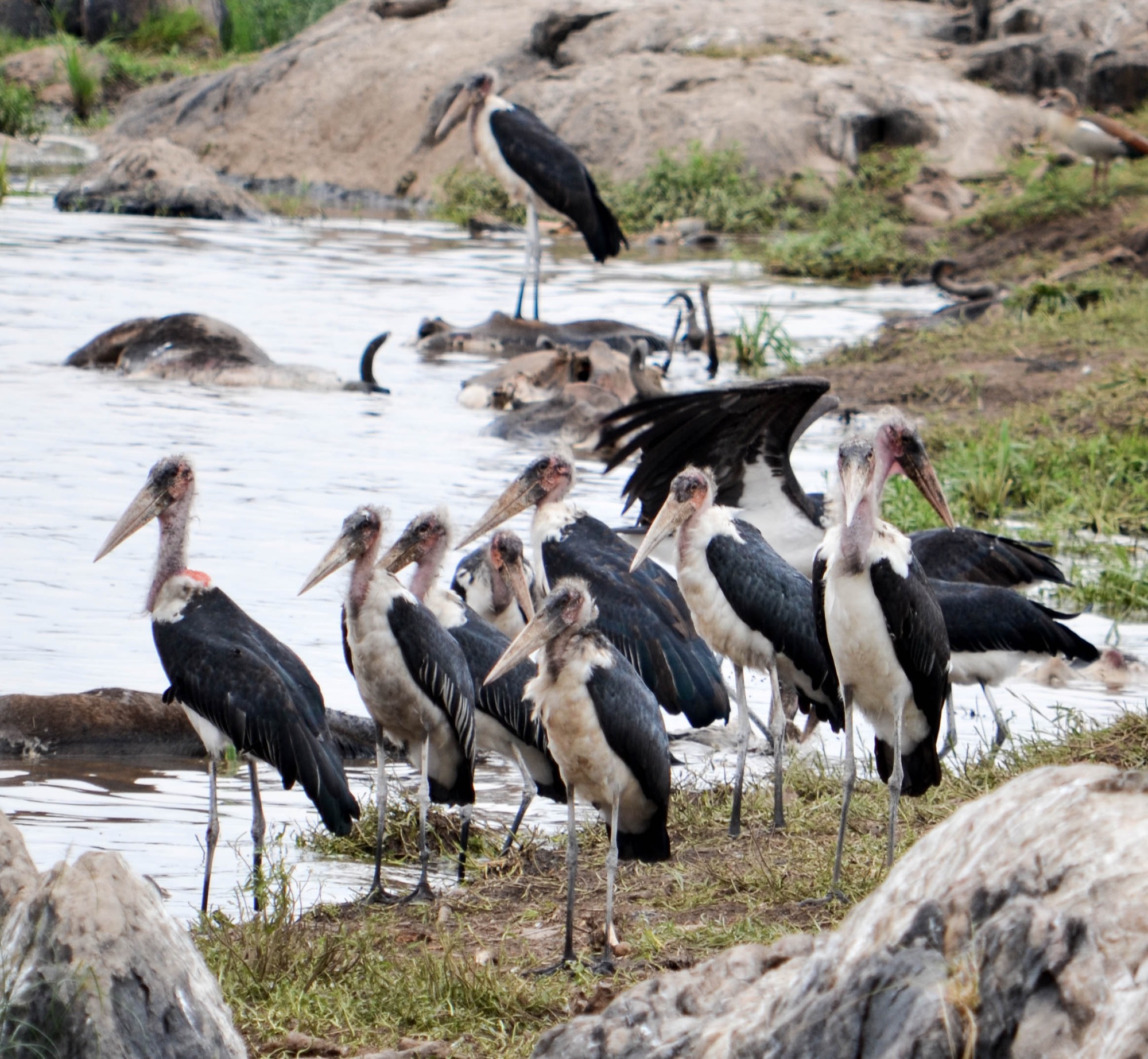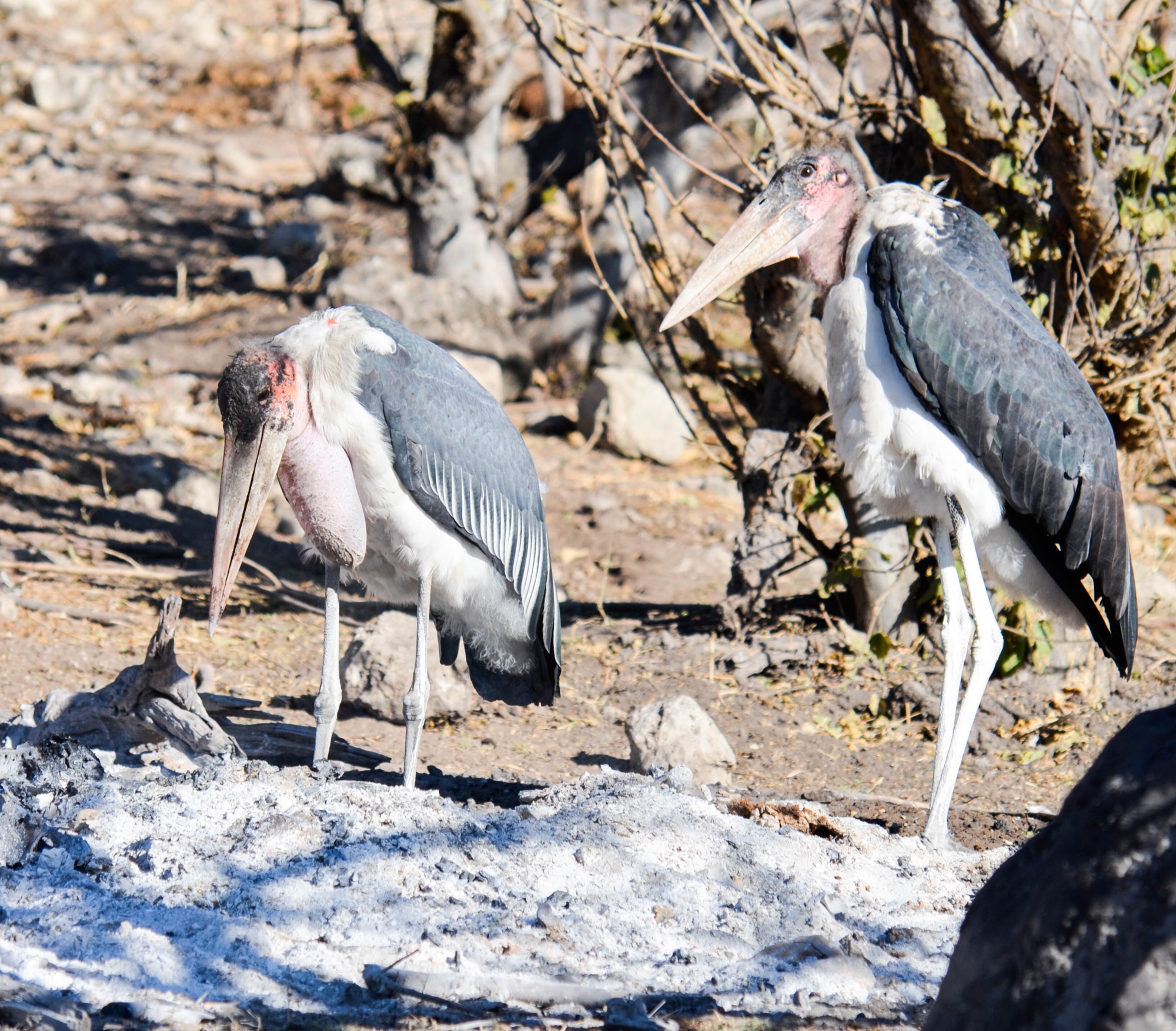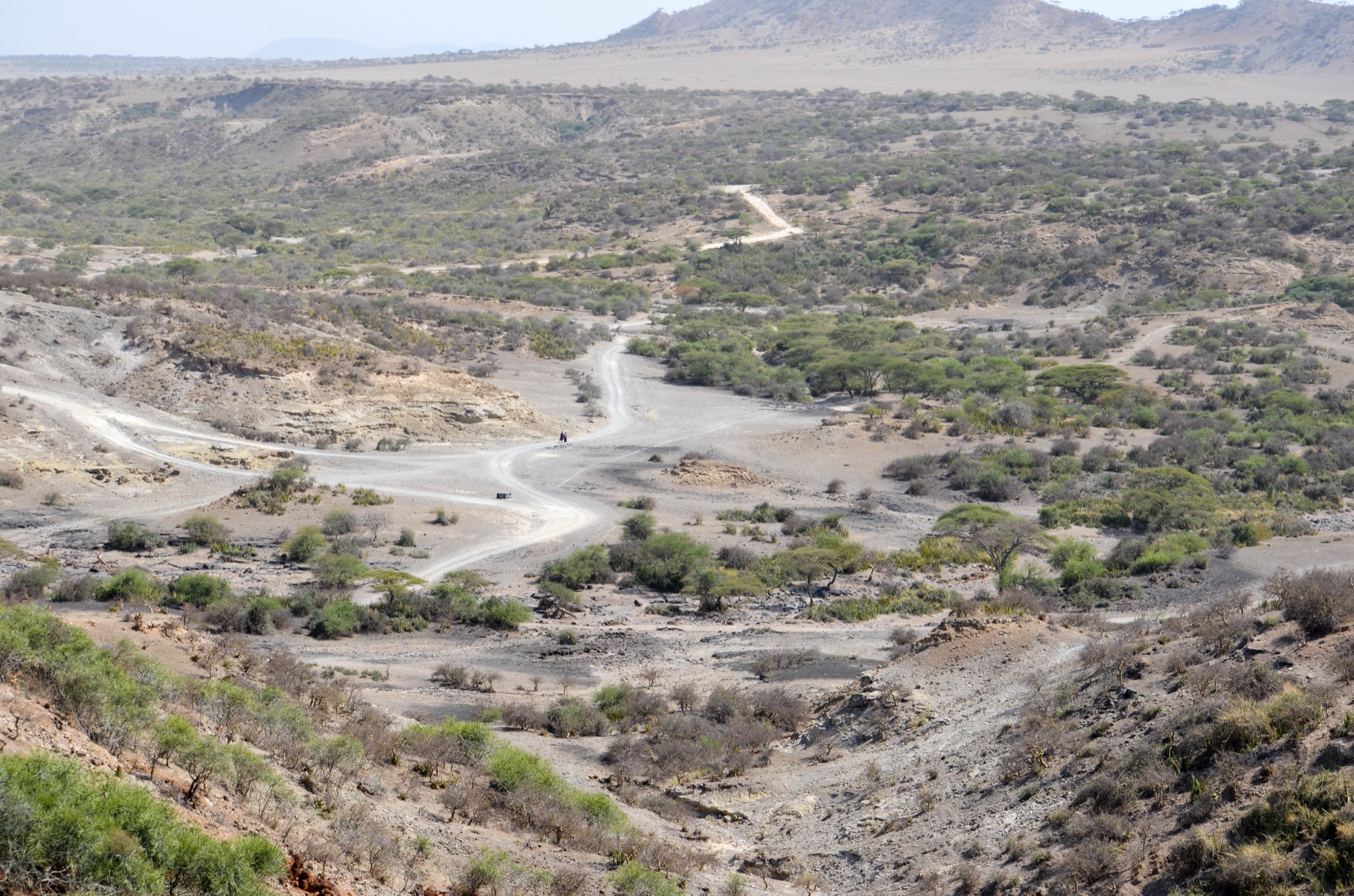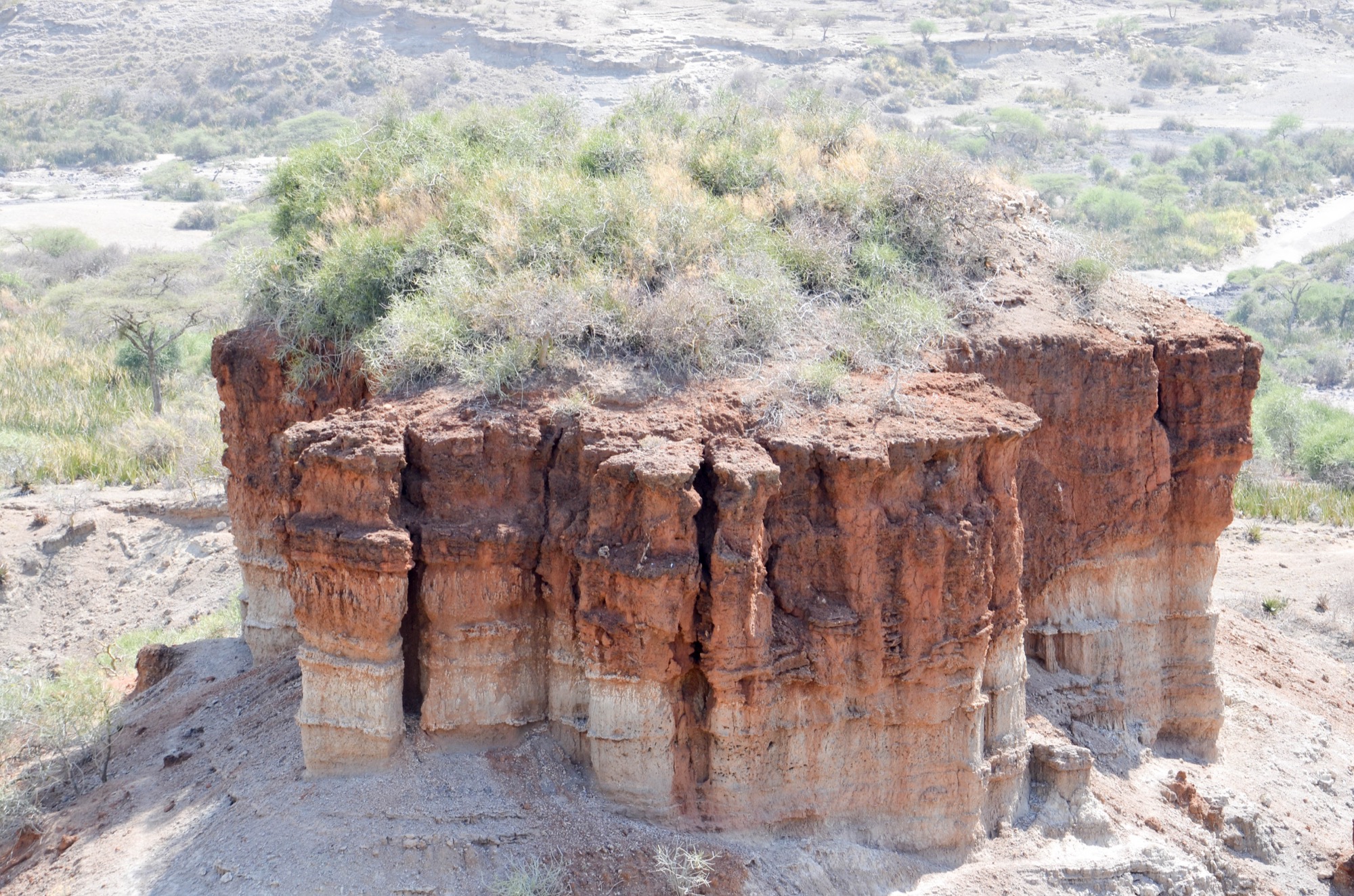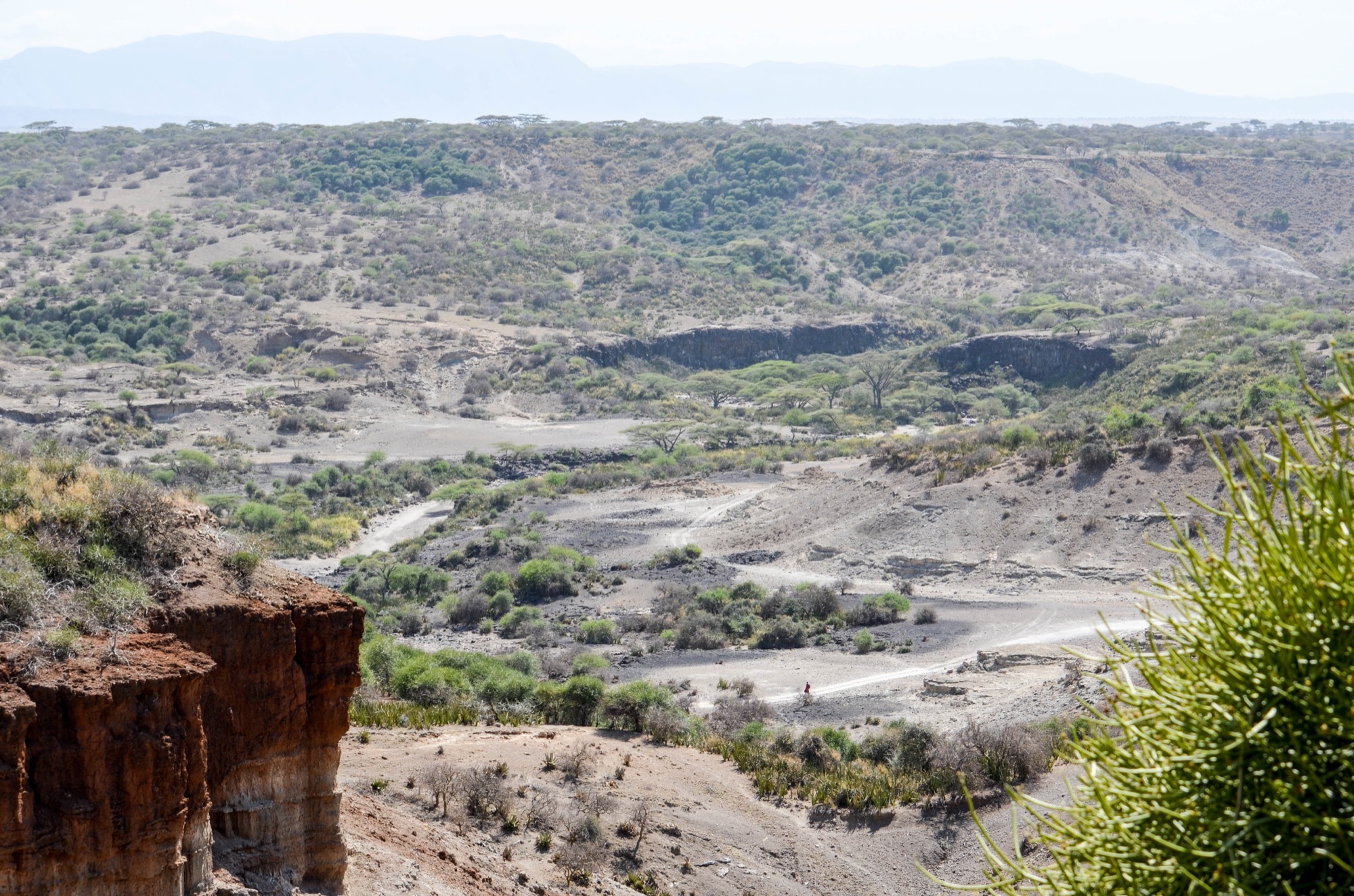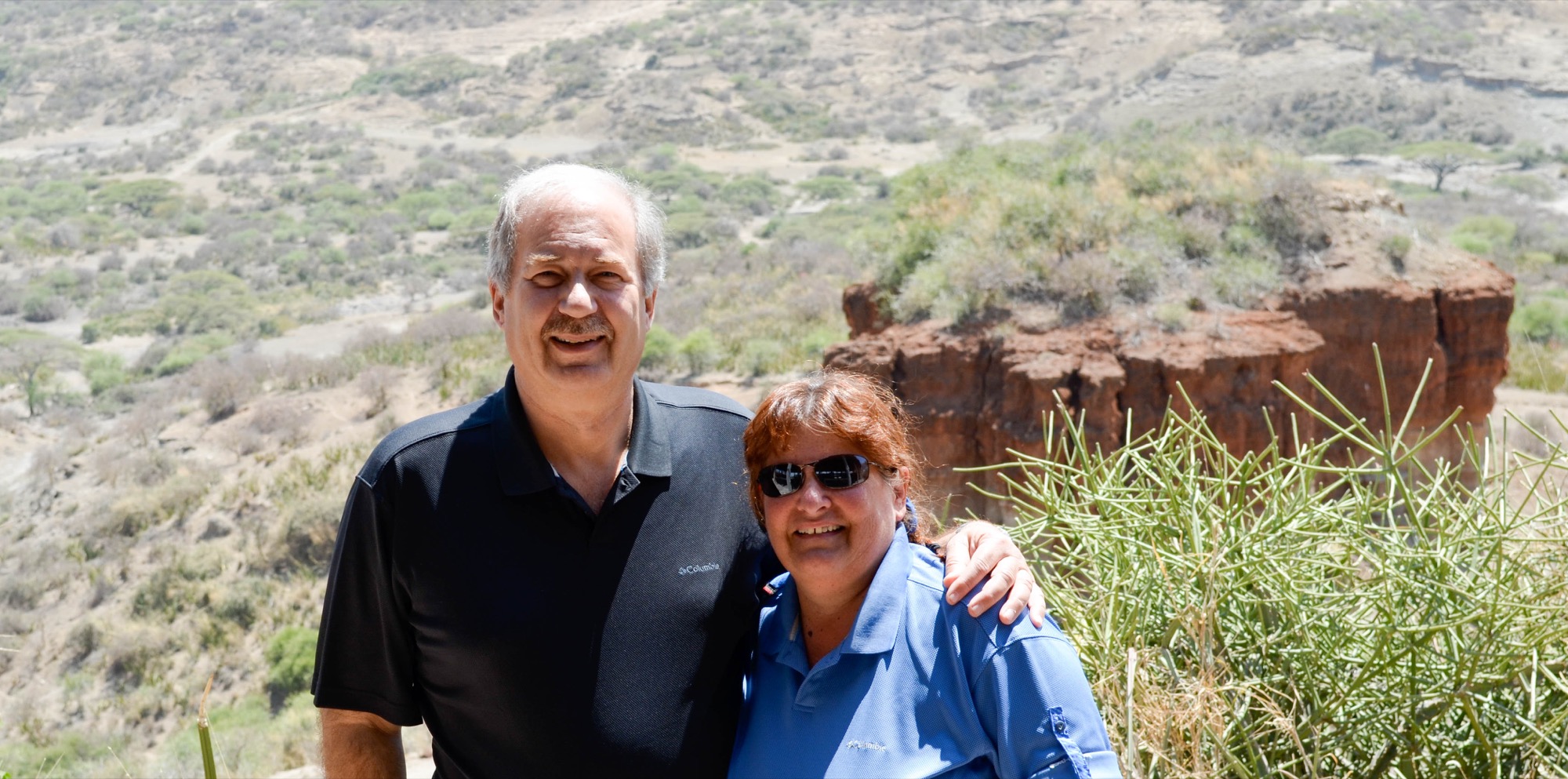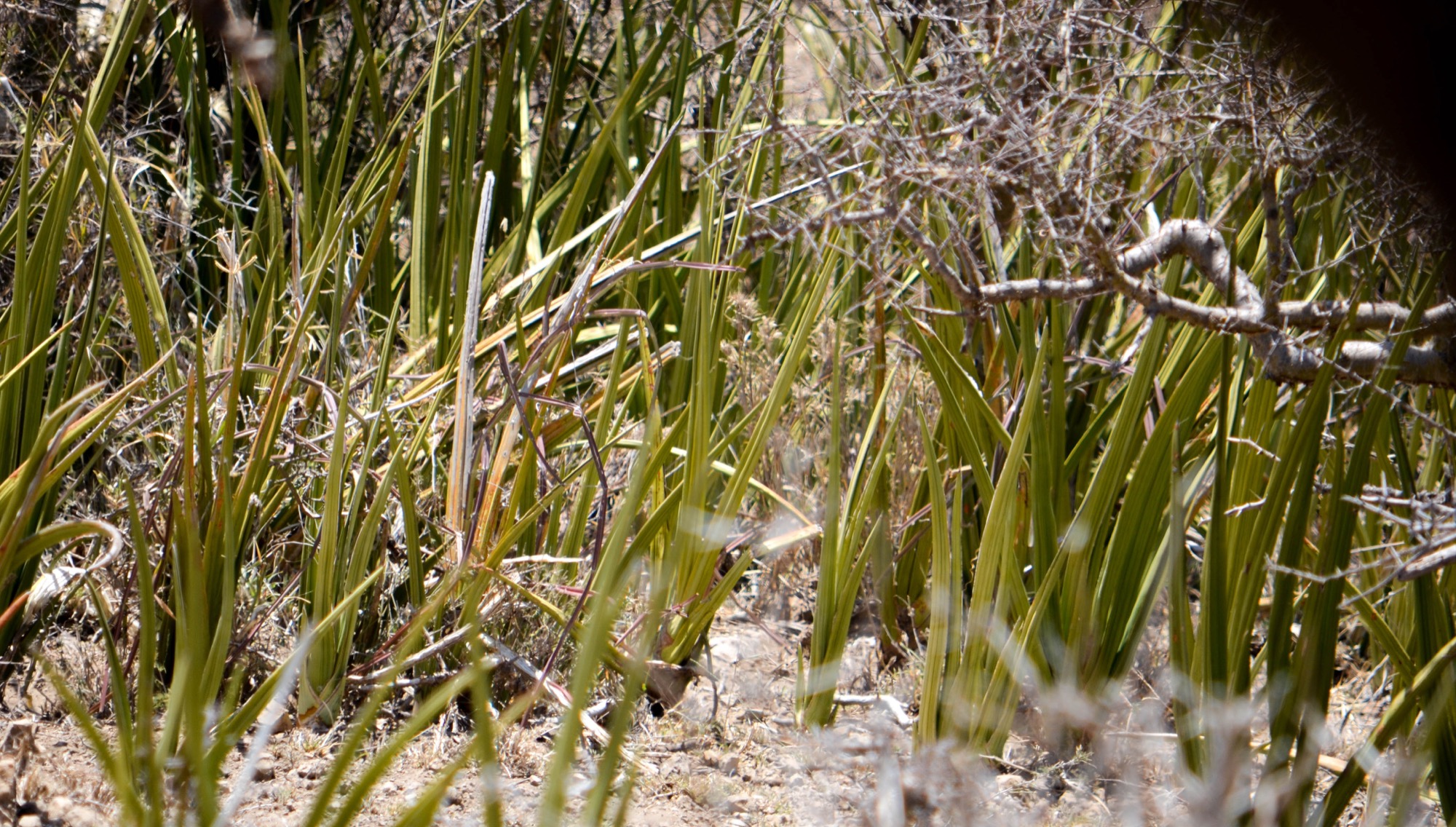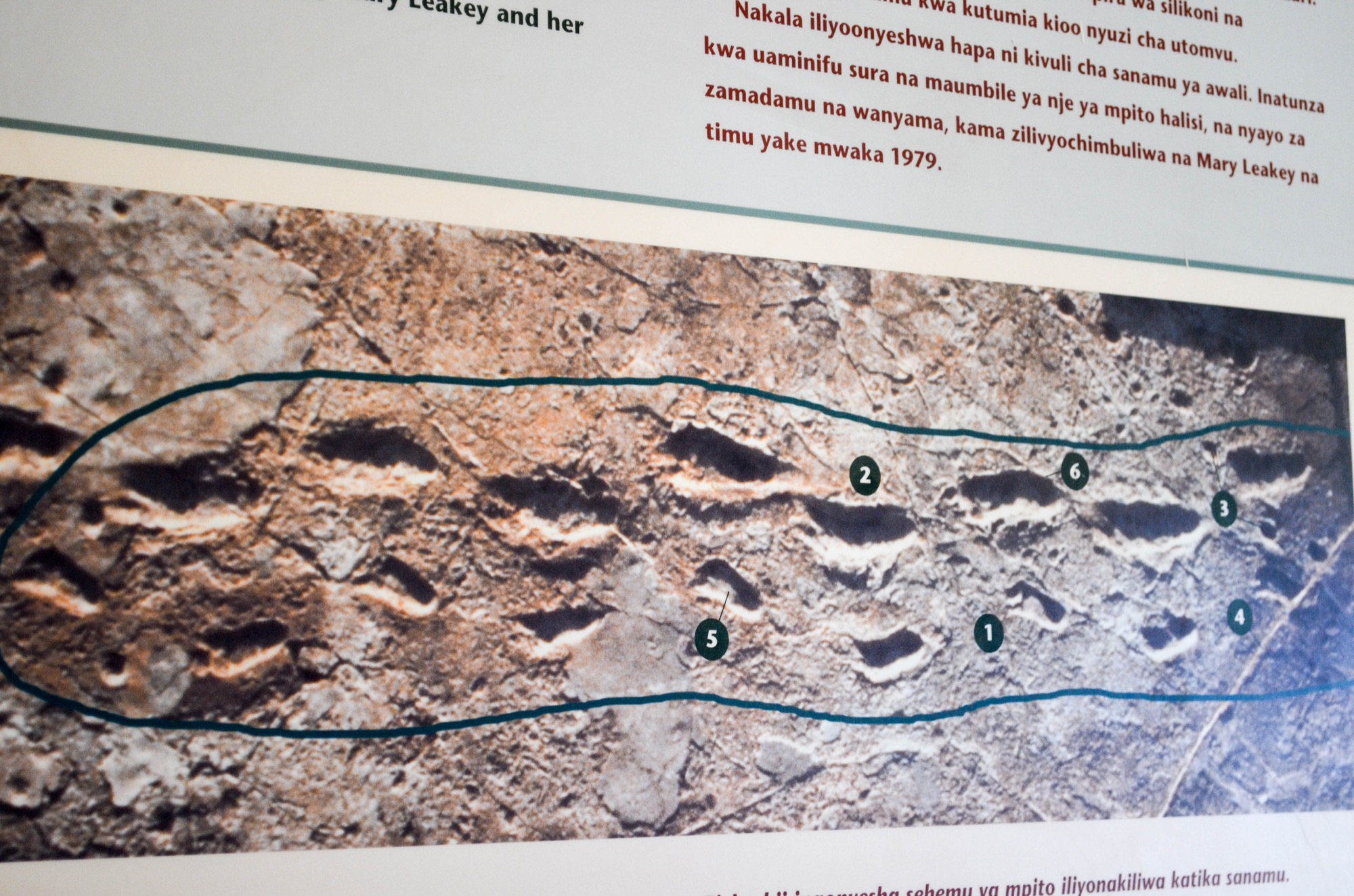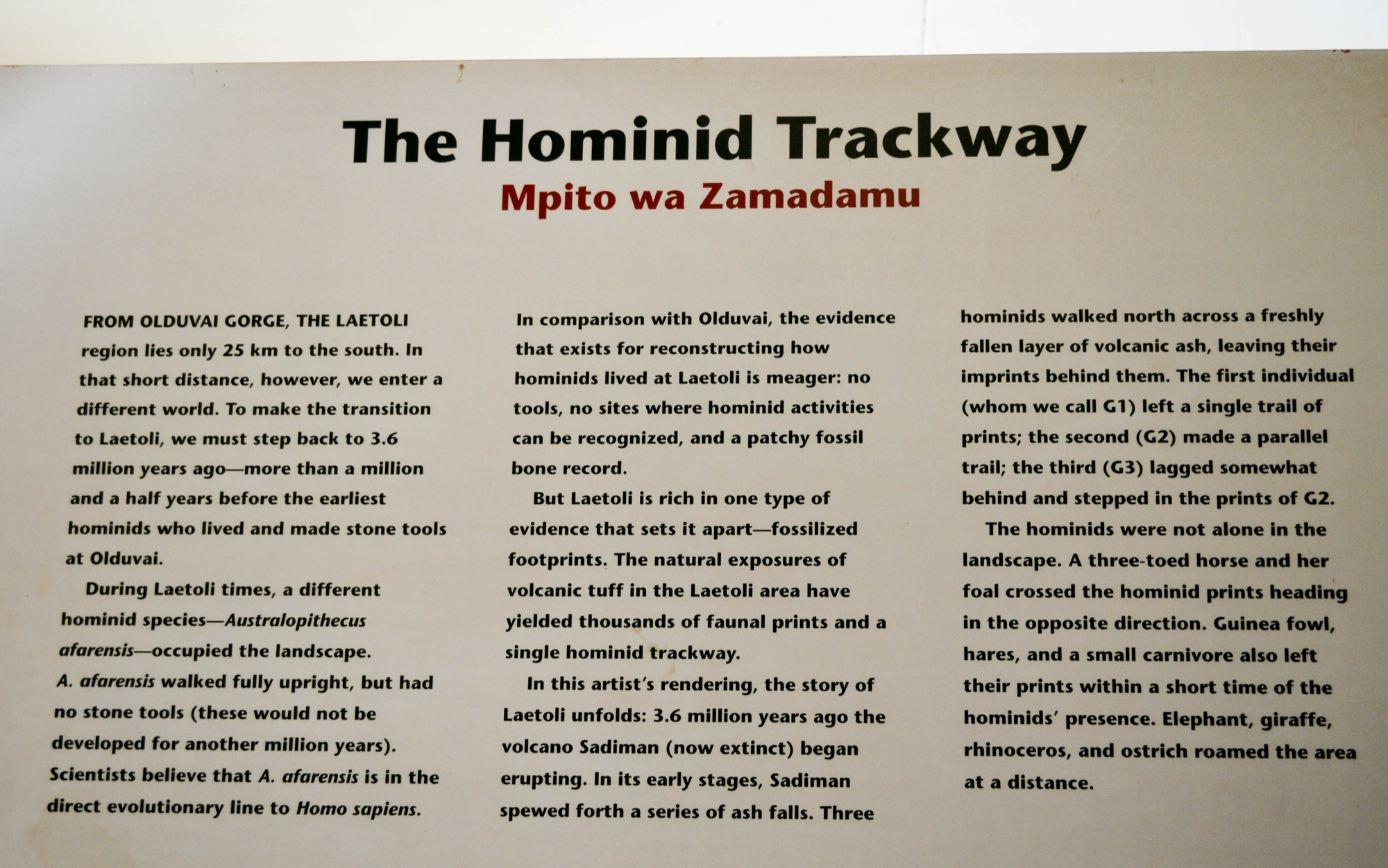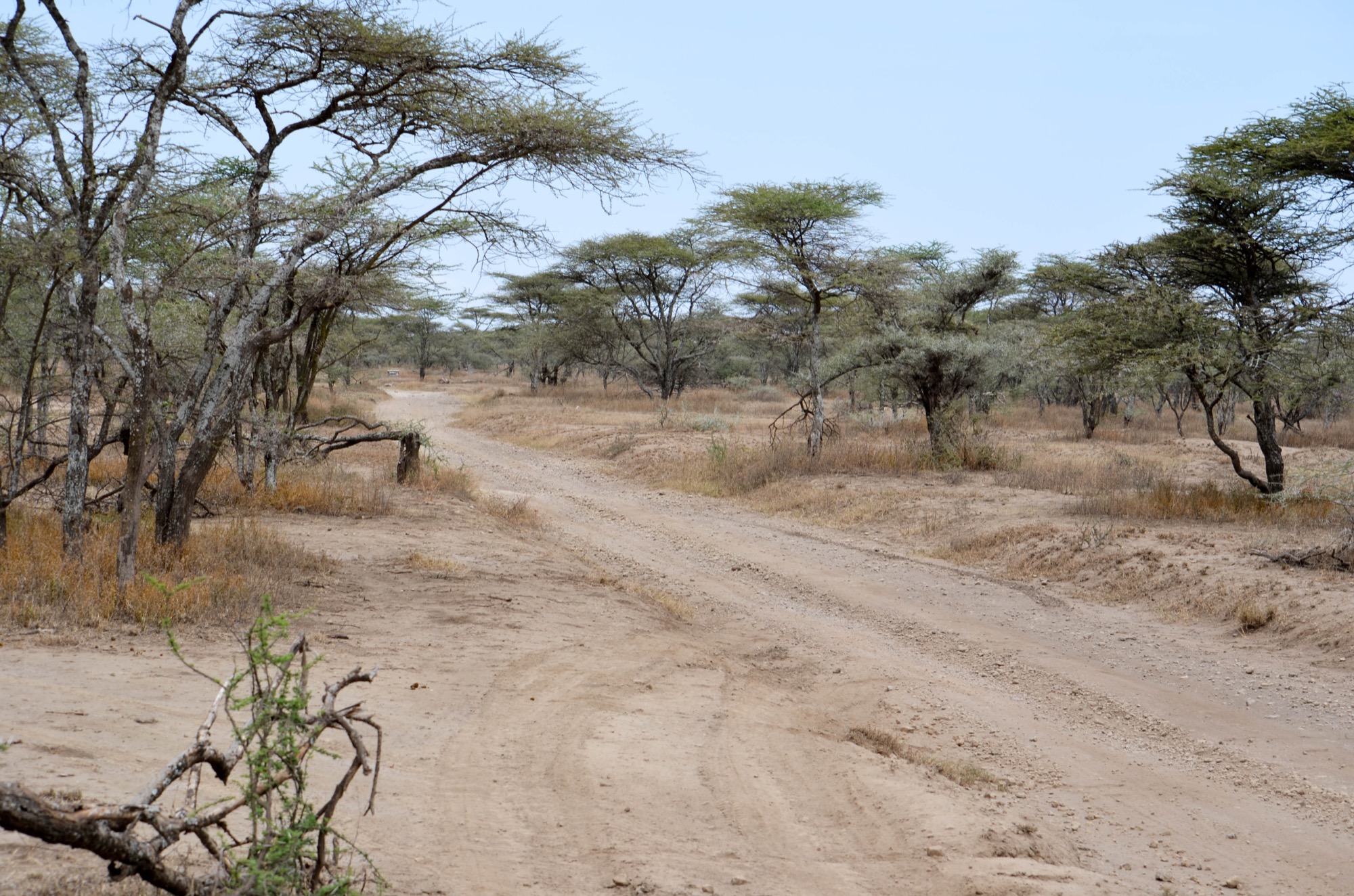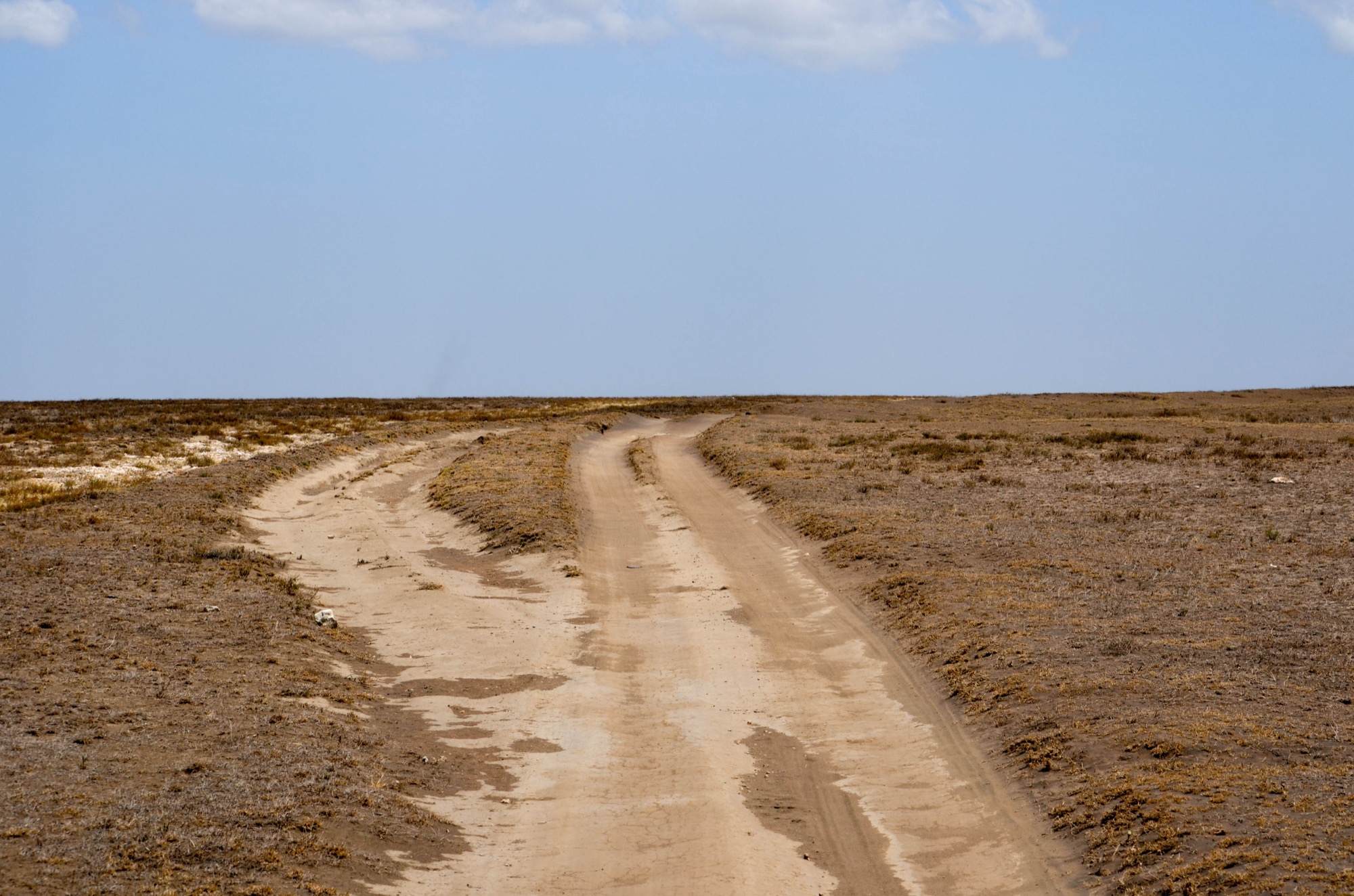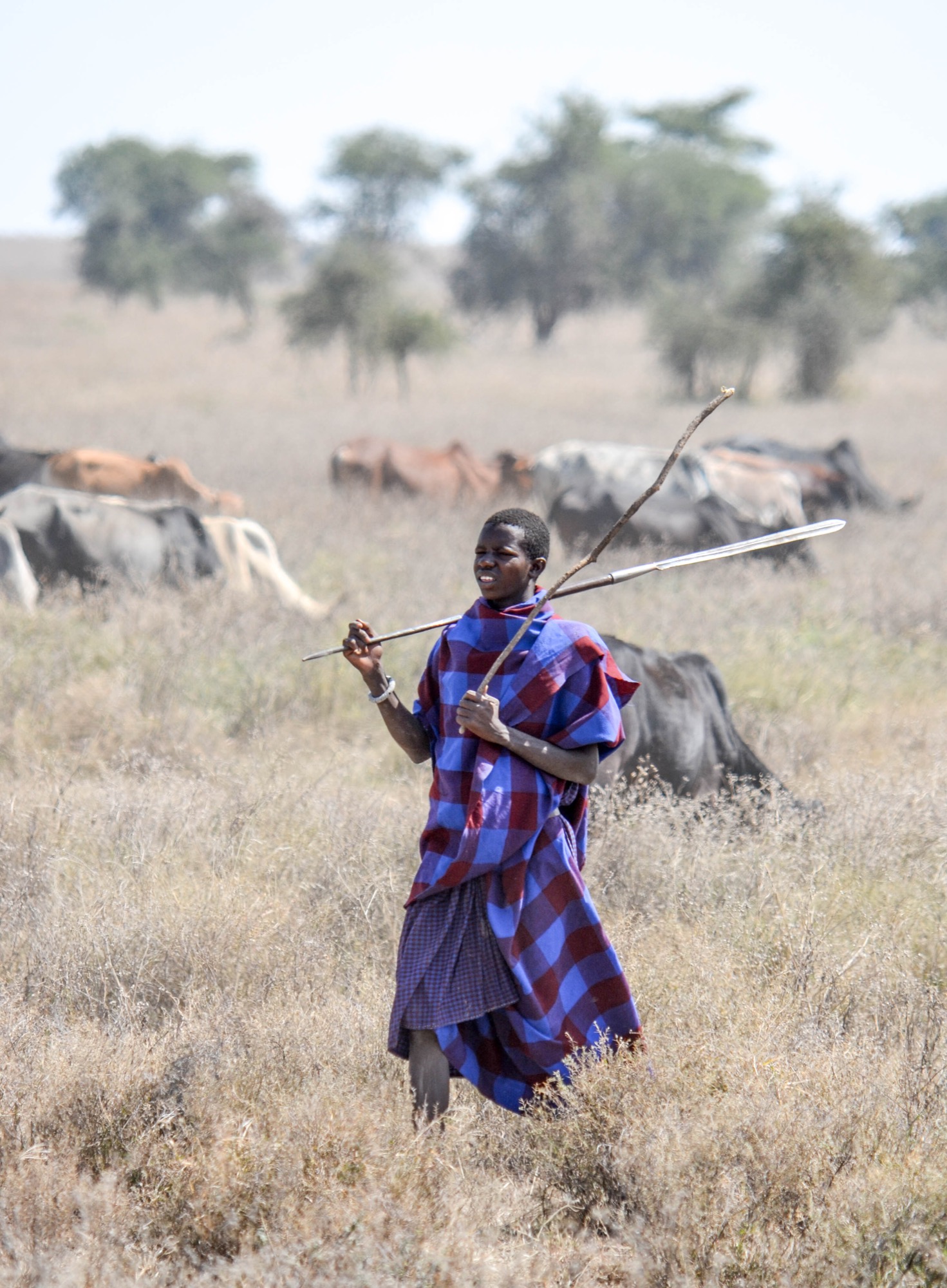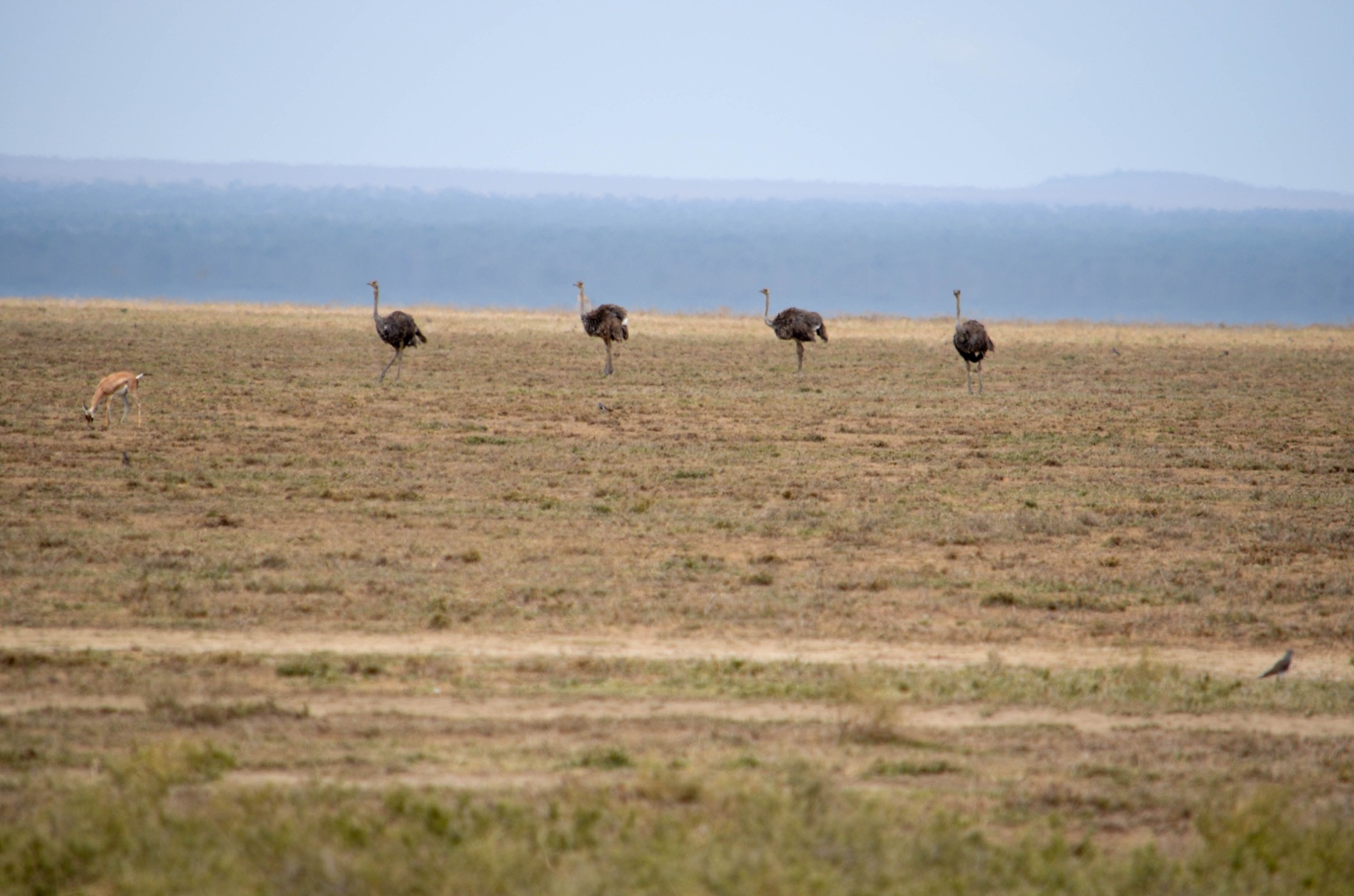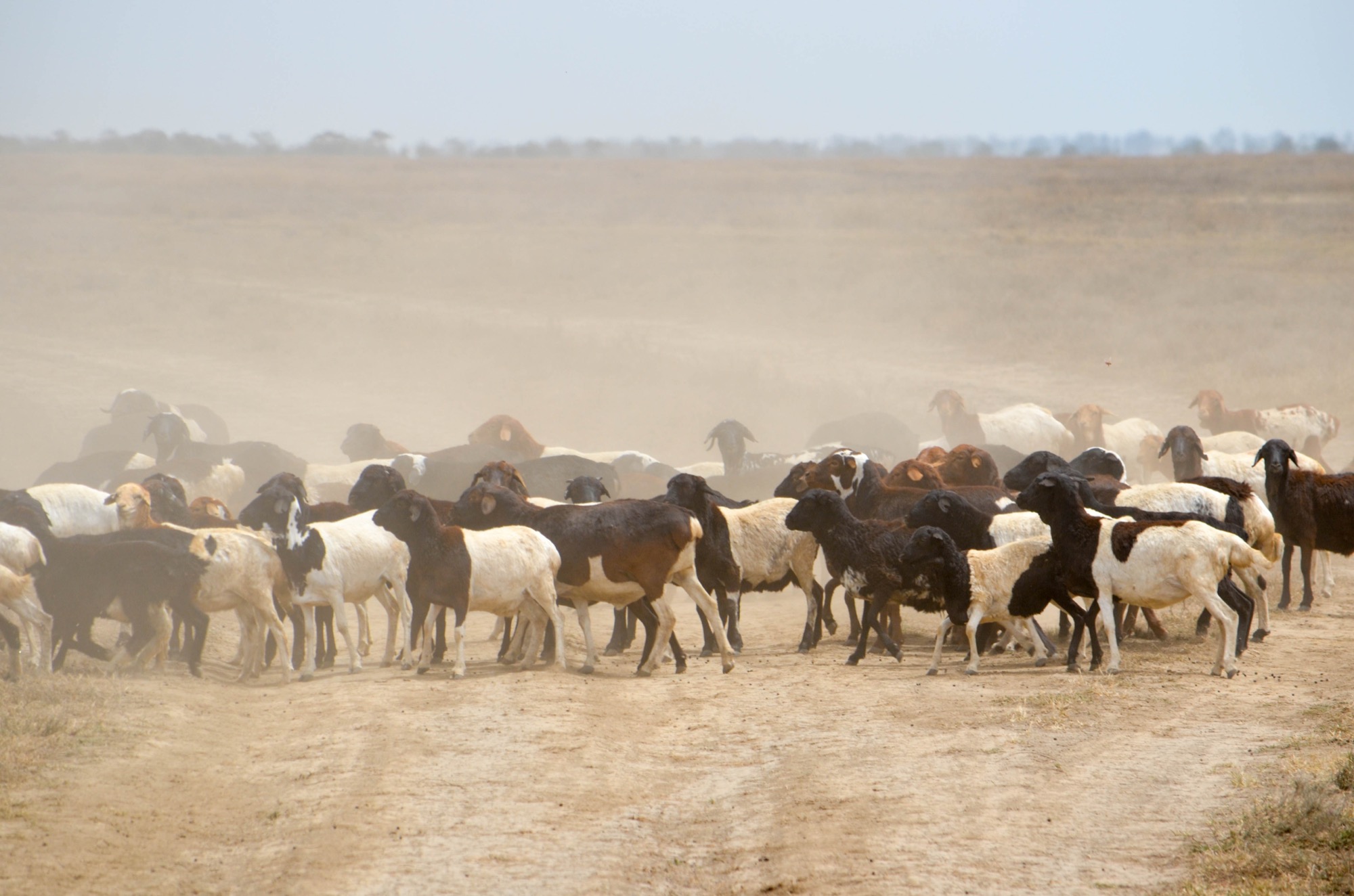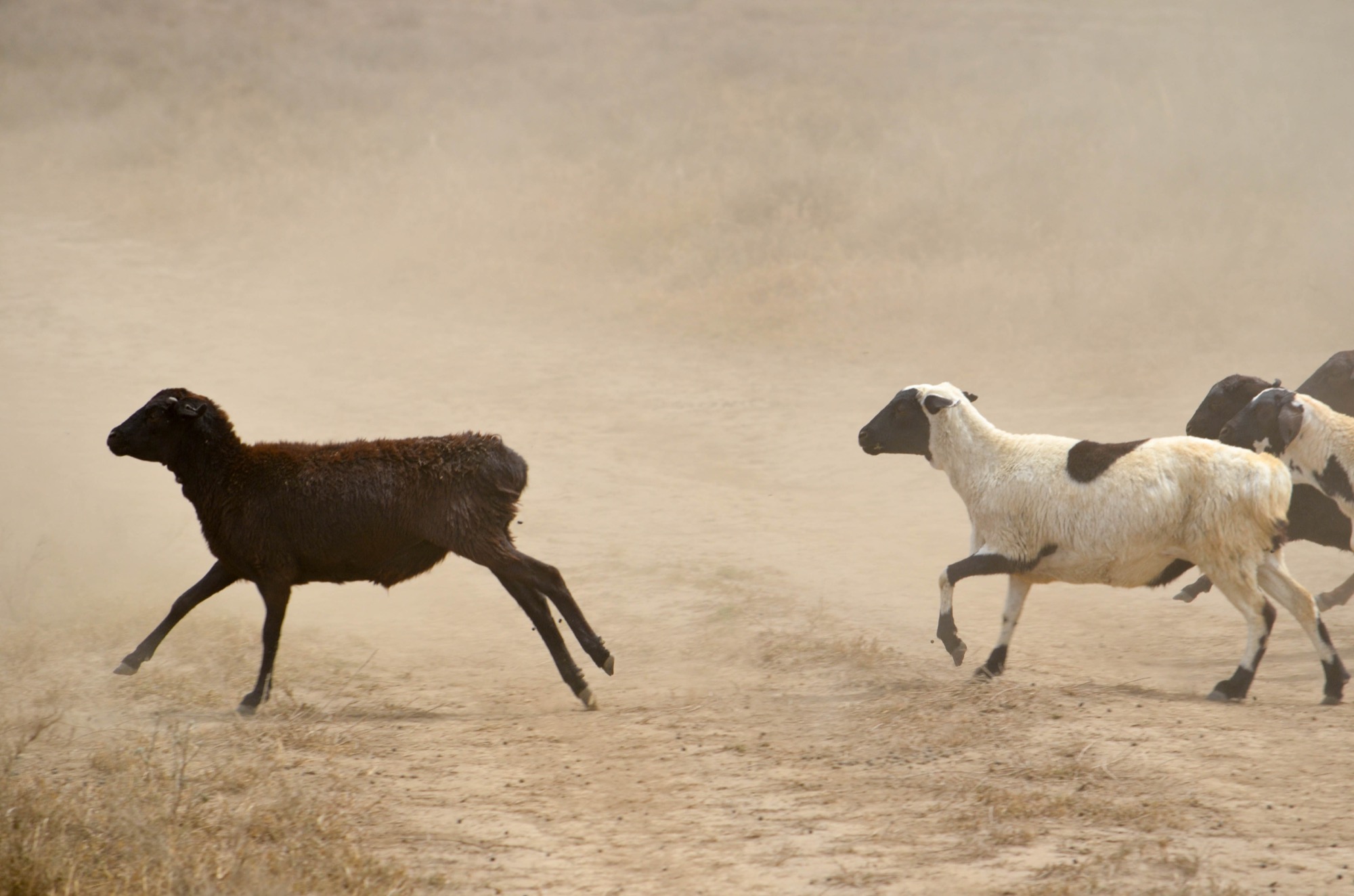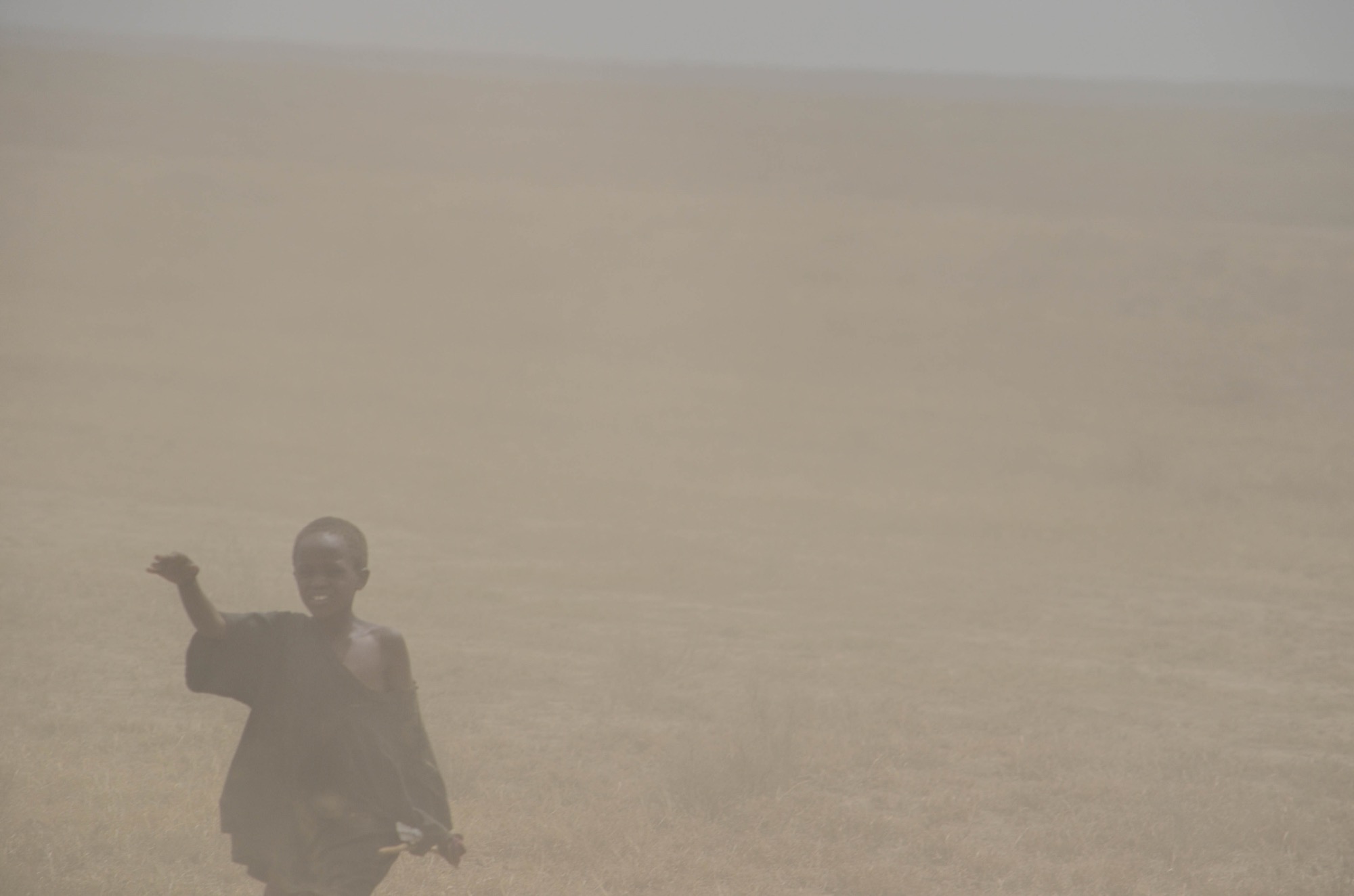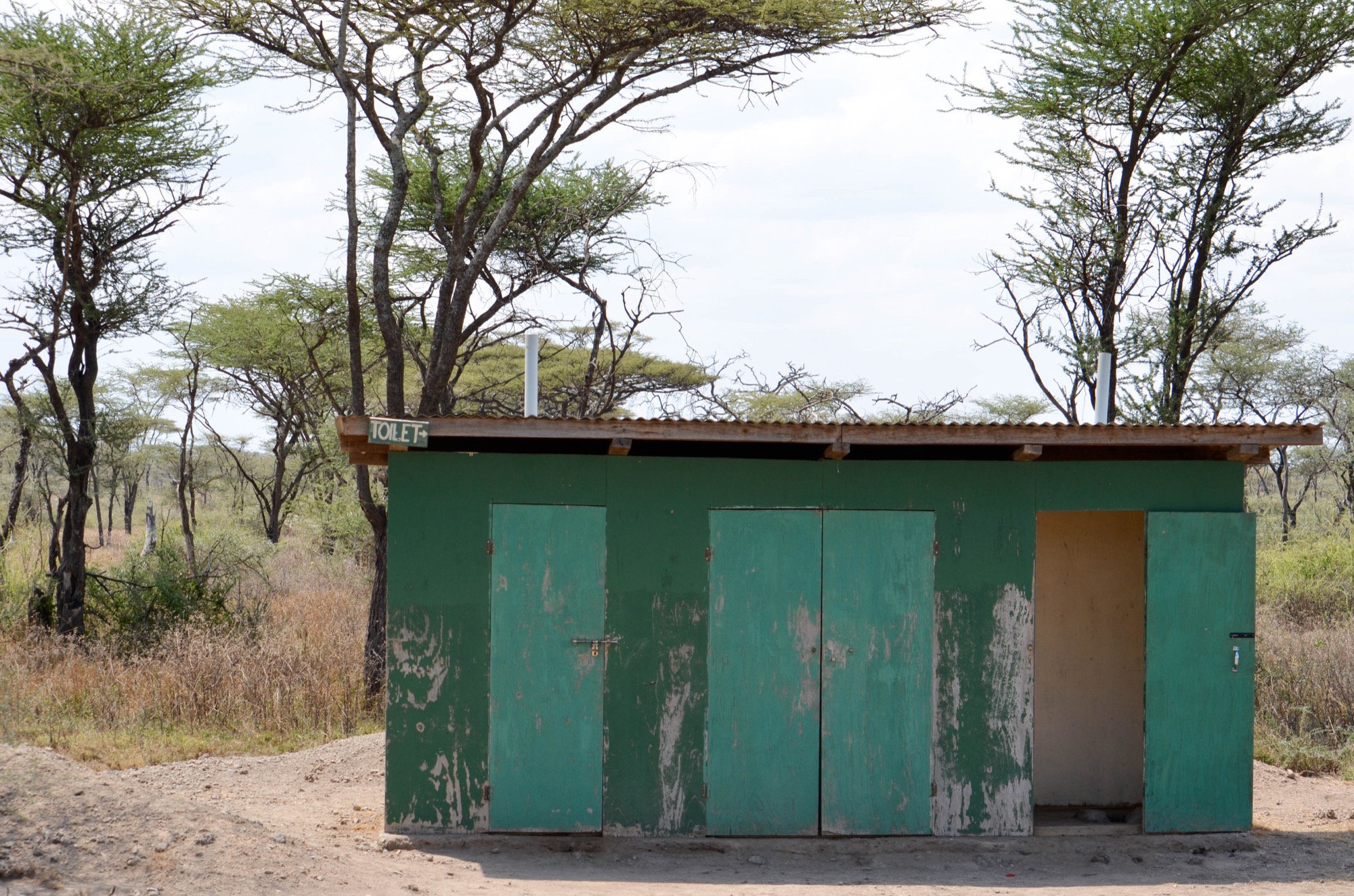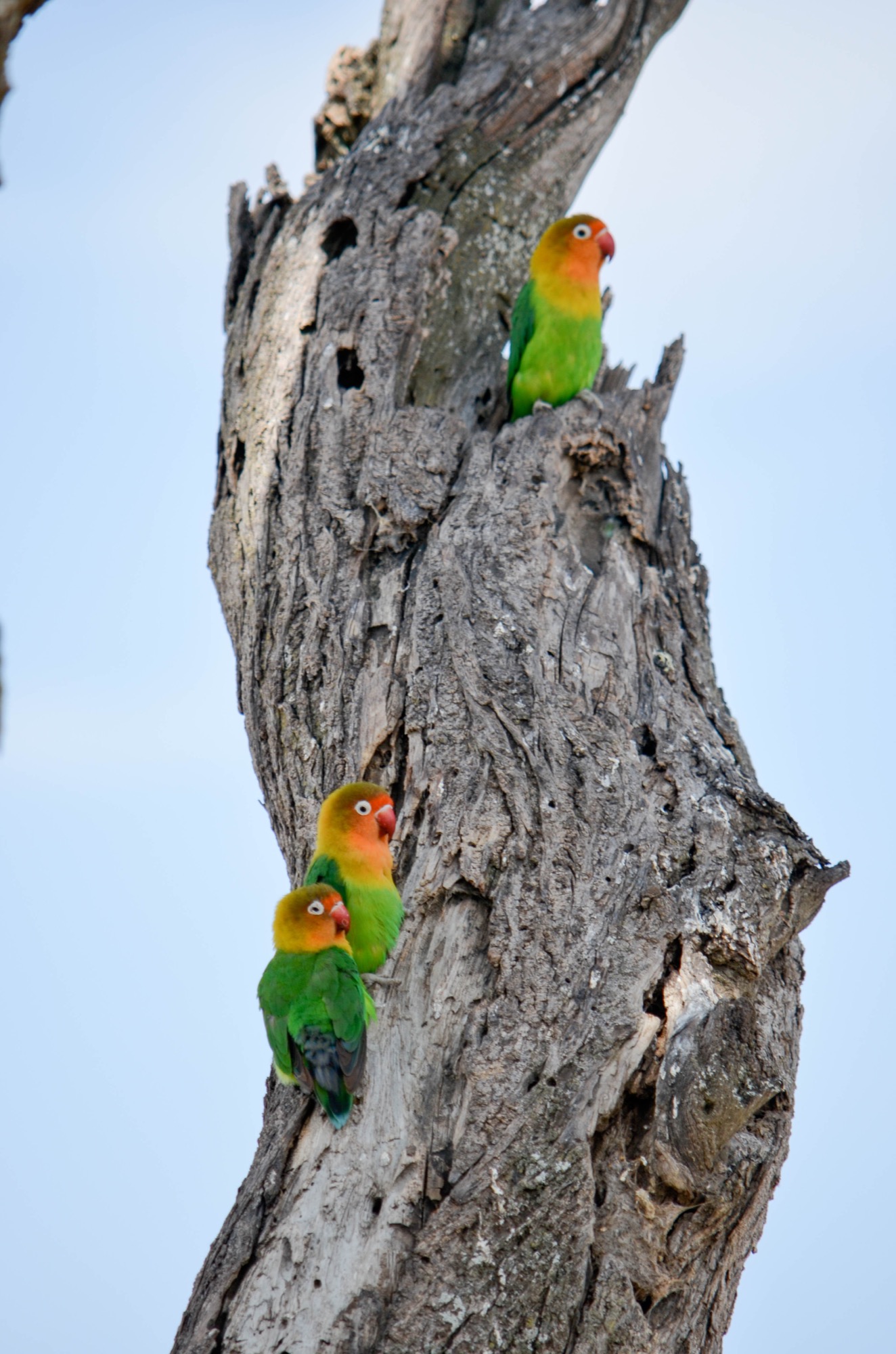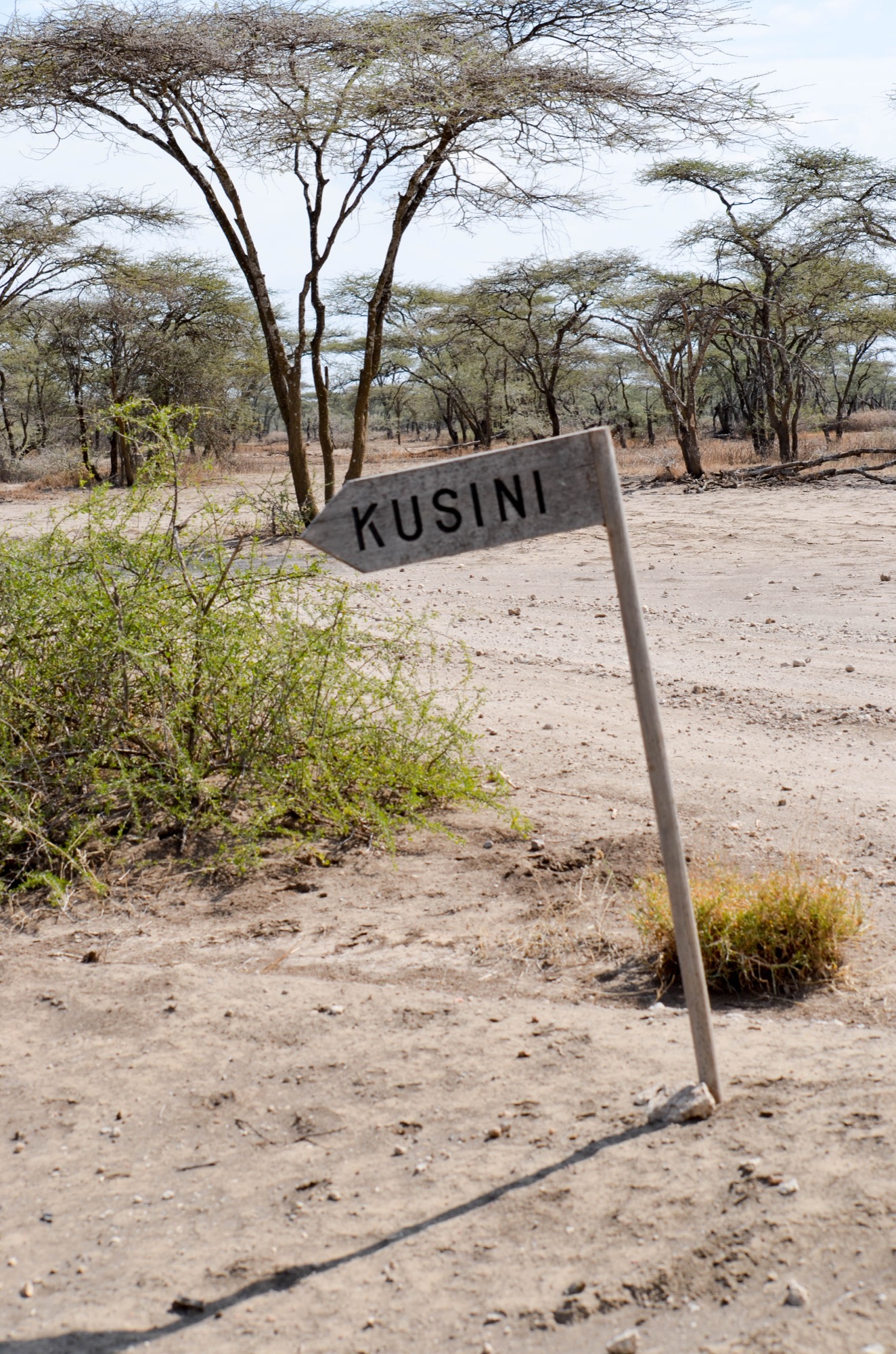Some of the birds liked to hang out near the water, such as the spoonbill, the darter (he spread his wings to dry them out after diving for food), the jacana, the Egyptian goose, the African white faced duck, and the African fish eagle.
Other birds were more comfortable on land. We saw ostrich, the kori bustard (the largest bird still capable of flight), the ground hornbill, guinea fowl, yellow necked spurfowl, and the saddlebilled stork.
We especially enjoyed seeing the weaver's nests. The weaver is a very social bird and large flocks hang out together and build their nests in the same tree. Many of the trees were so filled with these nests that they looked like Christmas trees that had been decorated with straw ornaments.
The hamerkop is an unusual bird. These birds are cumpulsive about building their nests. Sometimes they build several in the same year, even if they do not need them.
The nests are huge. Some nests are as long as five feet across, have more than 10,000 sticks that make them up, and are strong enough to support a person's weight.
There were also many scavengers about waiting for an opportunistic moment to pounce on someone else's leftovers. We saw lots of different vultures and some marabou stork.
Our next stop was Olduvai Gorge, the site of many important discoveries relating to man's early ancestors.
This is the oldupai plant which is commonly found throughout the Olduvai gorge. In 1911 a German scientist who was studying butterflies in the area asked the Maasai what the gorge was called. They misunderstood and thought he wanted to know the name of the plant. When they told him, he mispronounced the word and the gorge became known as the Olduvai Gorge.
In the museum at Olduvai Gorge we saw a replica of the hominid trackway. This contains footprints from about 3.7 million years ago of Australopithecus afarensis as well as ancient animal prints. The tracks were left in the volcanic ash of a now extinct volcano. The original trackway has been reburried in order to preserve it.
The trip from Olduvai Gorge to Kusini Camp in the south Serengeti took us through some of the most remote areas of Tanzania we had ever seen. Serengeti means "endless plain" in the Masai language.
For much of the journey, there was nothing as far as we could see (with binoculars) in all directions. We were not quite sure how Peter knew which way to go because there were no real roads and in some places even the jeep tracks seemed to disappear for long periods of time. The bumpy dirt roads are referred to as the "African massage."
Then, in the middle of nowhere, a traffic jam. Then we came across the African version of an "Andy Gump." Nearby, there was a tree that had several Fischer's Lovebirds. Finally, we saw a road sign pointing the direction to Kusini.
